Choosing where to retire overseas is more than just a financial decision—it’s about finding a place that feels like home, offers adventure, and aligns with your dream lifestyle. While around 20 countries make our Annual Global Retirement Index each year for their nationwide appeal, not every corner of a country is equally suited to expat retirees. This is why we’ve gone a step further to identify the top 20 regions within these destinations, focusing on specific areas that deliver the perfect balance of safety, affordability, amenities, and charm.
Whether you envision mornings on a Mediterranean coast, afternoons exploring colonial towns, or evenings in the crisp mountain air, these regions represent the very best of what their countries have to offer. With input from on-the-ground correspondents and local expats, we’ve highlighted the neighborhoods, cities, and rural retreats that promise an unparalleled retirement experience in 2025. These are in no particular order. They’re all worthy contenders as great places to live abroad. Let’s dive into the unique characteristics that make these regions stand out.
The World’s Best Retirement Havens for 2026
The World’s Best Retirement Havens for 2026
24 Countries Compared, Contrasted, Ranked, and Rated. You don’t have to be rich to enjoy a pampered retirement, you just need to know where to go. With our 35th Annual Global Retirement Index, our experts hand you a detailed roadmap. Details—and a Special Offer—Here

By submitting your email address, you will receive a free subscription to IL Postcards, The Untourist Daily and special offers from International Living and our affiliates. You can unsubscribe at any time, and we encourage you to read more about our Privacy Policy.
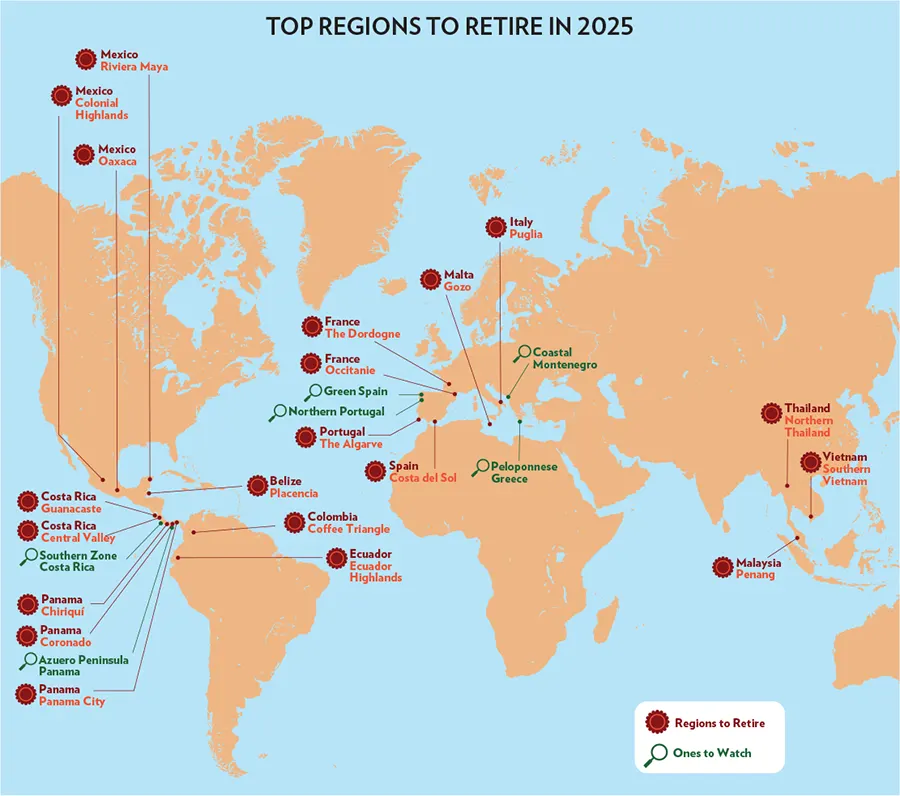
EUROPE
The Algarve, Portugal
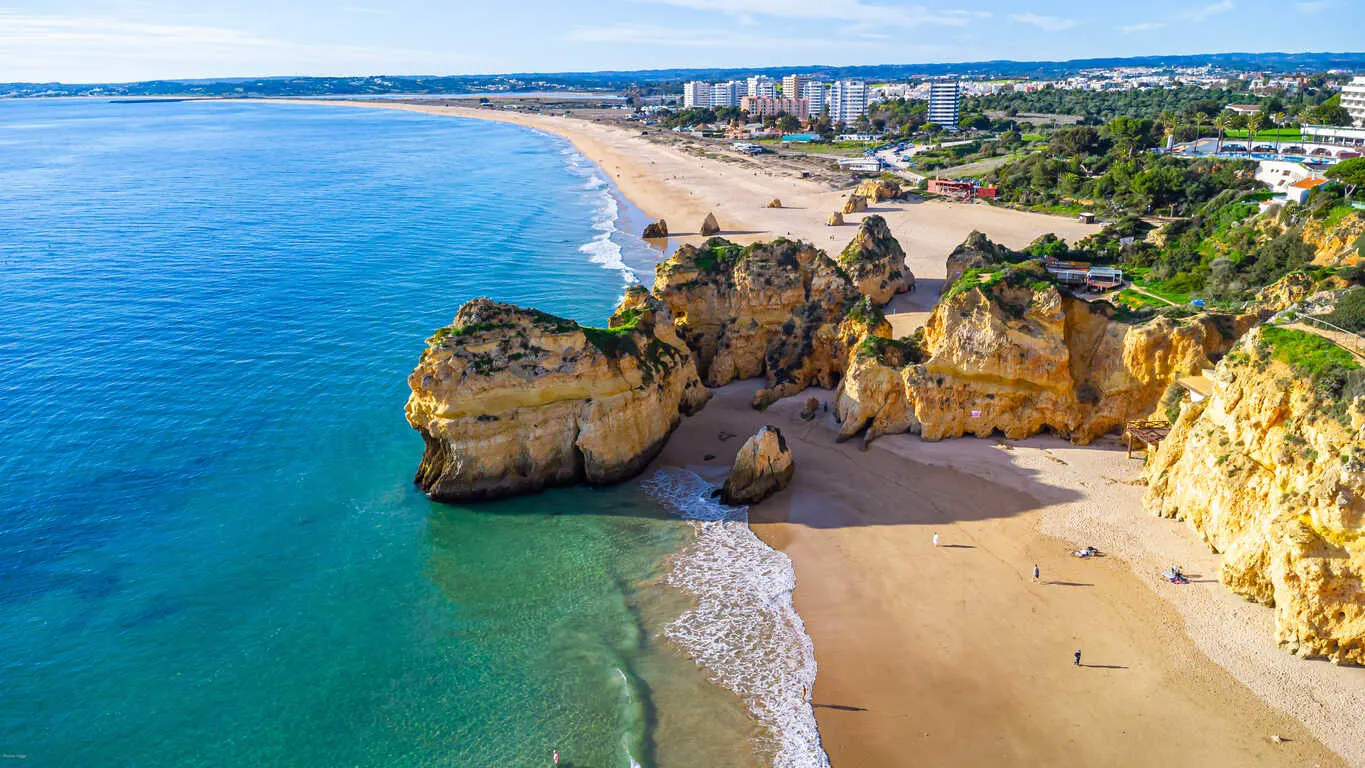
By Terry Coles
The Algarve undeniably offers residents an ideal year-round climate, with over 300 days of sunshine, warm, dry summers, and mild winters with little to no rain. Sun-soaked beaches, whitewashed villages, colorful tiles, and cobbled lanes captivate the hearts of all who visit. Year-round outdoor activities are a major draw for active retirees. Beach hikes, kayaking through caves and grottoes, sipping wine at outdoor cafés with friends, or exploring palaces and castles can be enjoyed any time of the year.
Although many Portuguese people speak English, it is especially prevalent in the Algarve. Due to the influx of tourists from the United Kingdom and around the world, settling into life here is easy and uncomplicated. Menus in restaurants, films in cinemas, and even many television programs are available in English.
Retirees in the Algarve can maintain an active lifestyle with like-minded people. Options include joining yoga classes, practicing tai chi in the park, hiking, biking, paddleboarding, or playing pickleball with friends. Expats regularly organize meetups, luncheons, dances, trivia nights at pubs, karaoke sessions, and coffee socials.
Festivals offer opportunities to sample local food and wine, enjoy traditional music, or dance the night away. The Corridinho is a traditional Algarvean folkloric dance involving couples stomping, skipping, and spinning in circles. During the last two festivals we attended, I was pulled into the dancing, which left me dizzy and breathless.
Wake up every day to dazzling sunshine and sip cappuccino on your balcony overlooking the ocean. The rumble of a commuter train awakens your senses, and your face spontaneously bursts into a smile. Long gone are the days of rushing to the office or worrying about your golden years. Never again will you need to stress about affordable healthcare, personal safety, or acceptance for who you are.
Throw on a pair of shorts, sneakers, and a sweatshirt and walk along the coast with friends. Enjoy fresh seafood for lunch at an oceanfront restaurant where glasses of wine cost just three euros each. Explore a hilltop castle, volunteer at an animal shelter, or stay in your pajamas and read a book.
Make new friends from around the world and learn about their cultures, food, customs, and languages. In the Algarve, you can live your best life. Your golden years will become the adventure of a lifetime, and you will be the envy of your friends. Life in the Algarve is “tudo bem,” a popular local phrase that means “everything is good.”
Most expats live comfortably on a monthly budget of around $2,500 to $3,000, depending on lifestyle. Rent ranges from $700 to $1,400, utilities (electricity, gas, water) cost about $150, and groceries are around $400. A Wi-Fi and two-cell-phone package costs approximately $65, and private health insurance ranges from $150 to $600 per couple, depending on age, health conditions, and type of policy.
We own a car but mostly walk, except for grocery shopping or doctor’s appointments, which are out of town. Filling the gas tank costs about $50 and can last for weeks unless we travel more frequently. Depending on your location, public transportation options include buses, trains, Uber, or Bolt.
Portugal’s long history as the oldest country in Europe means retirees blend in seamlessly and enjoy access to affordable, high-quality healthcare in every town. Private and public hospitals, medical and dental clinics, pharmacies, and specialists are available to meet all healthcare needs.
Portugal’s infrastructure is among the best in the world, offering clean, safe drinking water, reliable electricity, and high-speed fiber internet. The highway system is easy to navigate, well-signed, and features ample rest stops with food, drinks, and bathrooms. Faro International Airport provides budget flights to numerous destinations, ensuring easy connections worldwide.
Facebook groups like Americans Living in the Algarve, East Algarve Expats, Lagos Expats, Albufeira Expats, and Americans & Friends PT help expats connect, ask questions, and benefit from shared expertise.
The Algarve boasts the best weather in the country and offers retirees a safe community with English-speaking locals, excellent healthcare, affordable living, modern conveniences, fresh seafood, locally grown produce, captivating coastlines, and traditional villages. Experience what so many have come to love—a simple, calm life and the best retirement you could ever imagine.
Puglia, Italy
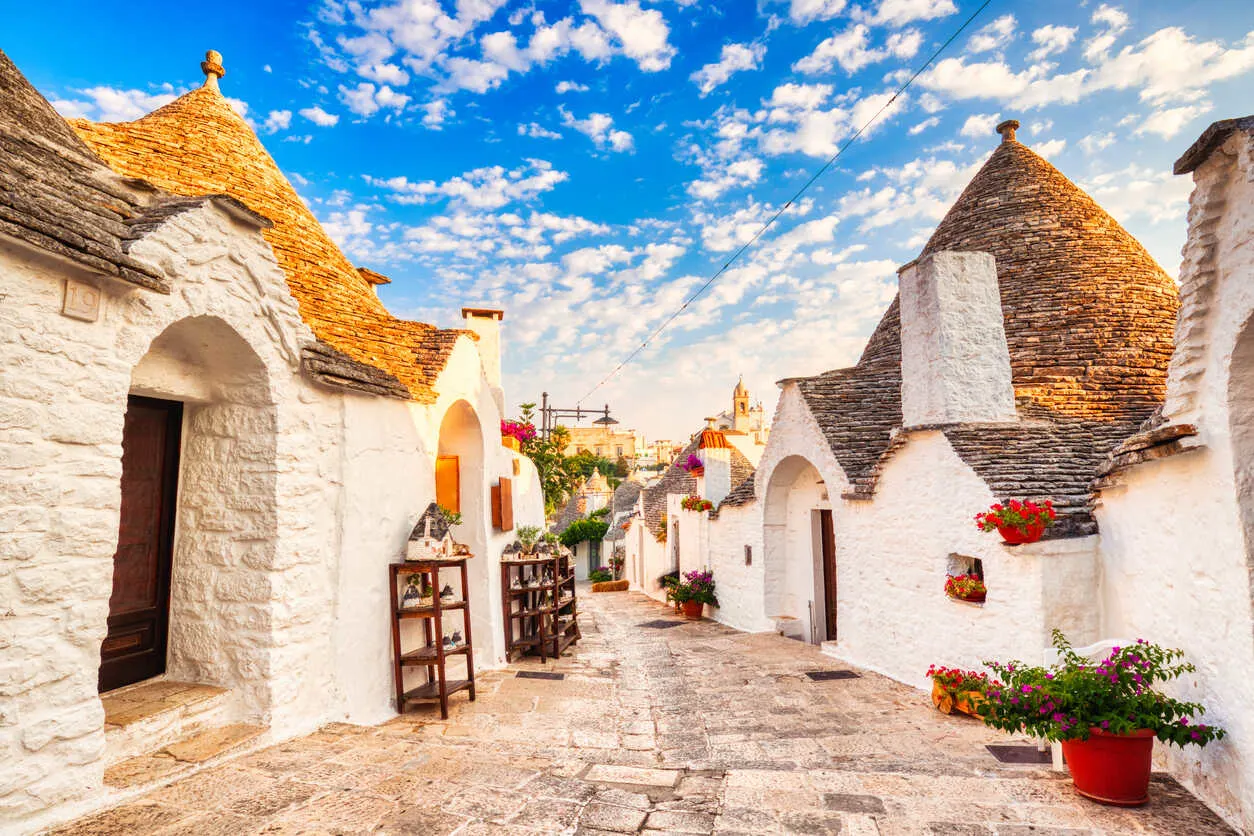
By Valerie Fortney-Schneider
If you’re looking for a retirement or digital nomad location that is sedate and calm, where you’ll be isolated and undisturbed, then Puglia is not for you! The exuberant and embracing culture of the region ensures you’re included, drawn in, and made part of the famiglia of your neighbors. Here, you’ll make friends easily and become part of the community, whether it’s a town festa, a grape harvest, or a Sunday meal with the family. Puglia prides itself on its inclusiveness and hospitality.
Though it may seem isolated in the south of Italy, Puglia has been a crossroads of cultures for more than two millennia. Influenced by Greeks, Romans, Byzantines, Normans, Arabs, and Spanish, each has left its mark, infusing the region with unique architecture, art treasures, foods, and dialects. With airports in Bari and Brindisi and a high-speed rail line running along the Adriatic to Venice, Puglia is well-connected to the rest of Italy and Europe.
With 500 miles of coastline on both the Adriatic and Ionian Seas, you’re always close to a beach, rocky shoreline, reef, or waterfront nature preserve. The region is mostly flat, featuring vast wheat fields, olive groves, and vineyards, but it also offers hilly areas like the steep Daunia hills, the rugged Gargano peninsula, and the rolling Valle d’Itria. Puglia produces much of Italy’s wheat for pasta and bread, 33% of the country’s olive oil, and 30% of its wine. Fresh seafood, locally raised meat, and a cornucopia of produce make it a paradise for food lovers. Many Italians consider Puglia one of the most culinarily creative regions in the country.
Vivacious yet laid-back, the Pugliese still adhere to traditional rhythms of life. Long lunches and siestas (called riposo) are the norm, with stores and offices closing from 1 p.m. to around 4 p.m.. Evening strolls and pre-dinner drinks (la passeggiata e l’aperitivo) are practically obligatory, offering the chance to catch up with friends or simply enjoy people-watching. Towns exude energy, with residents seeming happy, content, and proud. The Pugliese love a good party, and even the smallest towns host elaborate festivals featuring food, music, and dancing, such as the tarantella or pizzica.
With only about 65 rainy days per year, a mild climate influenced by the seas, and plentiful sunshine, Puglia offers fine weather from April through November. Winters are mild, rarely dipping below 48°F. Year-round activities include golf, hiking, horseback riding, and boating. Summers are hot and dry, perfect for water sports, snorkeling, exploring sea caves, or enjoying fresh seafood at beachfront restaurants. Puglia is also vegetarian-friendly, with culinary traditions that heavily feature locally grown vegetables.
Puglia is a region of contrasts. Sapphire waters offset bright white towns, vast olive groves hide compact villages, and modest churches conceal breathtaking frescoes and mosaics. Flat wheat fields give way to rocky promontories, rugged hills, and mountain peaks, while crystal-clear seas wash the coastline, offering something for everyone.
Costs vary depending on location, property type, and proximity to amenities. In the Daunia hills of northern Puglia, homes can be purchased for $40,000 to $75,000, while similar properties in Bari’s suburbs cost around $200,000. Ostuni, once a bargain, has seen prices rise due to demand, though habitable homes can still be found for under $160,000. For better deals, consider Martina Franca, Ceglie Messapica, or San Vito dei Normanni in the Valle d’Itria.
Rents typically start at $550 for a one-bedroom apartment, with $750 being the average for a two-bedroom. Coastal living in Puglia often see lower purchase prices but higher rents. Monthly expenses for a couple average around $1,730, with key costs including $750 for rent, $250 for utilities, $50 for cell phones, $300 for groceries, $30 for internet, $200 for dining out, and $150 for car expenses such as insurance and fuel. Dining out is affordable, with pizza and beer costing about $20 for two, while grilled meat or seafood feasts range from $20 to $50, often including wine. Local wine is incredibly affordable, with bottles from cooperatives costing $5 and bulk refills as little as $2 per liter.
Whether you prefer bustling Bari, charming Lecce with its baroque architecture, or smaller, picturesque towns like Ostuni, Locorotondo, and Martina Franca, Puglia offers options to suit every lifestyle. Coastal towns like Gallipoli, Otranto, Monopoli, and Trani provide vibrant, year-round communities for water lovers. Regardless of the town, you’ll find friendly and welcoming neighbors, as the Pugliese are known for their outgoing and spirited nature.
Gozo, Malta
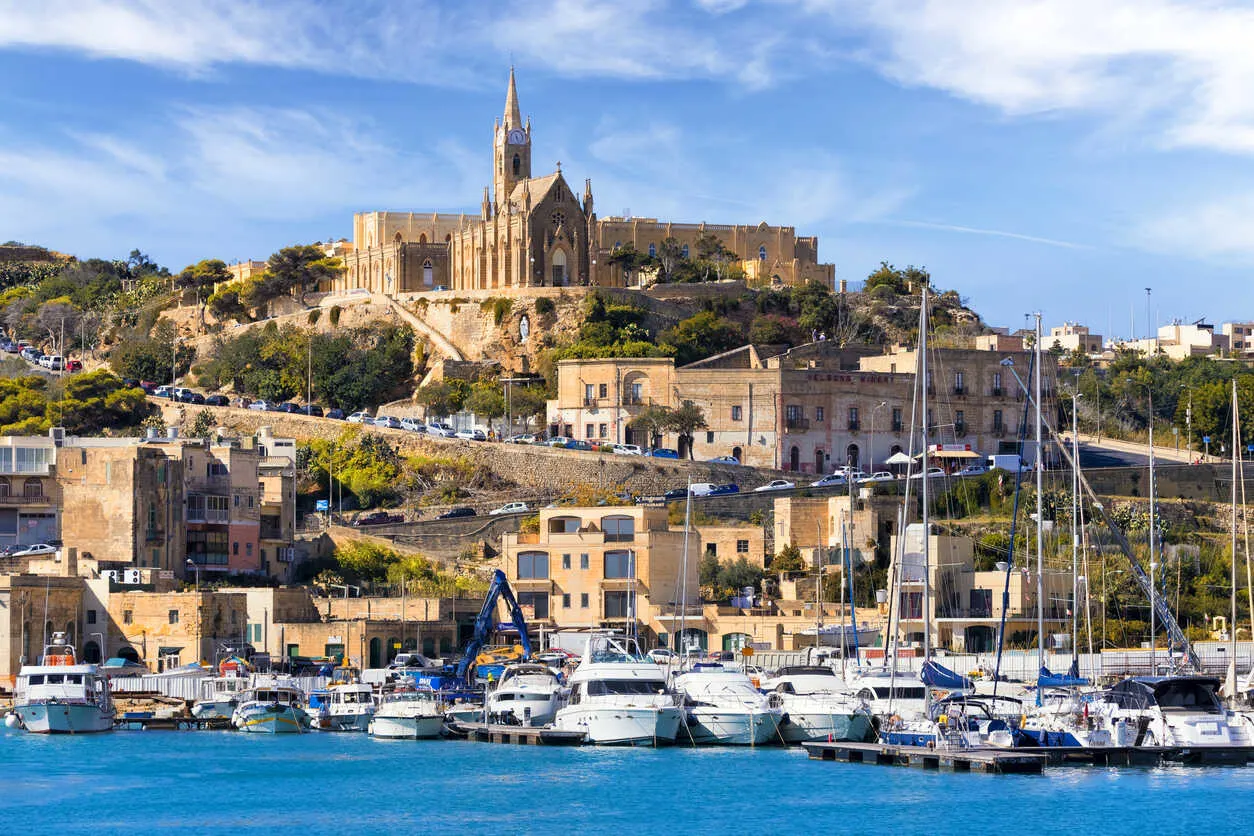
By Mary Charlebois and Kevin Scanlon
Gozo is part of the Republic of Malta’s archipelago, located 60 miles south of Sicily. It is an ideal landing spot for expats seeking a quiet, affordable lifestyle with easy, budget-friendly access to Europe, Africa, and beyond. Gozo boasts 3,000 hours of sunshine annually, making it Europe’s sunniest country.
Gozo’s history dates back to the Neolithic Age and has evolved into today’s independent, proud culture. The Republic of Malta was conquered by twelve of the world’s greatest empires before gaining independence from Great Britain in 1964. Life on Gozo revolves around family, faith, tradition, the land, and the sea. The Gozitan people are friendly and welcoming, making the island a comfortable and peaceful home for those seeking a slower pace.
On Wednesdays, the village of Nadur hosts a market where everything from apples to zippers is available at remarkable prices. This day also involves trips to the local farmer’s stand, butcher, baker, and grocer—Nadur has three of each. Wednesdays are one of the week’s biggest social gatherings, where friends and neighbors shop, share coffee, and enjoy local pastries. Conversation flows easily as Malta has two official languages: English and Maltese.
Life in Gozo’s villages centers around the town square, but the island offers much more. In the capital, Victoria, there are two opera houses where the symphony, big bands, and theater groups perform year-round. The opera season attracts enthusiasts from Gozo, Malta, and Italy.
Celebrations in the villages date back more than 700 years. Parishes host festas in honor of their patron saints during spring, summer, or fall. These events combine religious observances with concerts, fireworks, and dance performances. Many villages also offer live music, karaoke, trivia games, and expat gatherings on a weekly or monthly basis.
Gozo is home to numerous ancient temples, burial chambers, and other historic sites that appeal to those interested in Neolithic and Bronze Age history. The surrounding waters, with temperatures ranging from 68 F to 78 F, and the island’s Blue-Flag beaches make beach life a central part of Gozitan culture.
Restaurants and bars abound, offering a wide variety of dining experiences—from traditional Gozitan dishes to fusion cuisine, Michelin-starred restaurants, and street food. Locally and regionally sourced organic produce is a highlight of life on the island. Fresh goat and sheep cheese are made by local farmers, and Maltese sourdough bread has been baked using the same recipe for hundreds of years. Local vineyards produce excellent wines, and the island’s olive groves yield some of the finest olive oil in the world. The climate is perfect for growing tomatoes, and the resulting sauces elevate homemade pasta. Food is a deeply ingrained part of Gozitan life.
Gozo is an exceptionally safe place to live. Petty theft, while rare, may occasionally occur in tourist areas.
Affordability is one of Gozo’s strongest draws. The average rent for a 900-square-foot apartment is $615 per month, while three-bedroom sea-view apartments can be found for under $1,000—for instance, our furnished three-bedroom sea-view flat costs $750 per month. Food expenses for two people average $650 per month, and utilities—including electricity, water, garbage, mobile phones, a landline, and high-speed internet—amount to about $180 monthly. Healthcare costs depend on residency status, with private insurance available for those without access to state healthcare. Our private health insurance costs $292 monthly for two seniors.
Gozo has an estimated 40,000 population spread across 17 villages, with an estimated 20% being expats. Residents include English, Australians, Americans, Canadians, Irish, and people from many other nationalities. Each village has a unique identity, ranging from tranquil and secluded to more urban environments.
Transportation is both affordable and convenient. Buses are free for residents with a bus pass. Ferries connect Gozo to Malta, with the Gozo Channel Ferry free for residents and the Gozo Fast Ferry costing $4.88 per round trip for senior residents. Taxis and the Bolt ride-hailing service are available at reasonable rates. Driving, however, can be challenging due to narrow roads, sharp turns, and limited parking. Reliable public transport eliminates the need for a car.
Gozo’s location provides easy access to Europe, Asia, and Africa. Its Mediterranean climate, with warm, dry summers and mild, wet winters, is ideal for retirees. The island’s friendly people, affordability, and laid-back lifestyle make it an excellent choice for retirement.
Costa del Sol, Spain
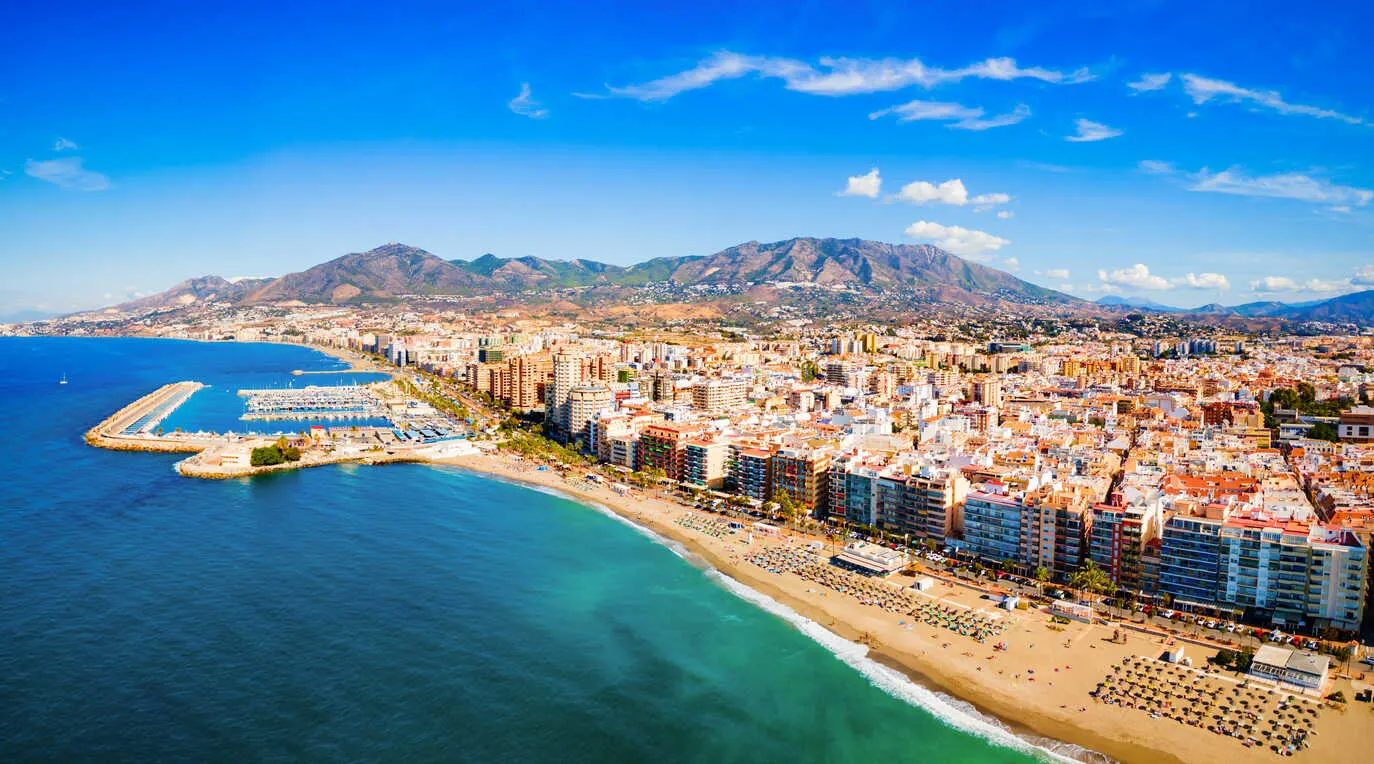
By Cepee Tabibian
Stretching along Spain’s southern coast, Costa del Sol, or “Sun Coast,” is known for its nearly year-round sunshine and laid-back atmosphere. This region blends traditional Spanish charm with city life, creating a warm and welcoming environment that is especially appealing to retirees, families, and digital nomads. With its pristine beaches, rich history, and vibrant food scene, Costa del Sol offers a perfect balance of relaxation and adventure.
Life on the Costa del Sol revolves around enjoying a slower pace. Mornings often begin with beach strolls or visits to local markets, while afternoons may involve golfing in Marbella or scenic hikes in the nearby mountains. Long, leisurely lunches and afternoon siestas are common, and late afternoons are often spent at a chiringuito, or casual beach bar, with toes in the sand.
The region is well-connected, making it easy to explore Southern Spain. Destinations like Málaga, Granada, Seville, and Ronda are rich in history and cultural significance and are accessible by bus, train, or car. Málaga-Costa del Sol Airport provides direct flights to major European cities and international hubs, including seasonal non-stop flights to Newark Airport.
Costa del Sol offers a variety of picturesque living options, from charming villages to upscale beachfront cities:
Málaga: A cultural hub and one of Spain’s fastest-growing cities, Málaga is renowned for its art scene, historic architecture, and thriving expat community, making it a friendly place for retirees.
Estepona: Known for its quaint old town and modern amenities, Estepona combines tranquility with beautiful beaches.
Fuengirola: A lively town with endless beaches and a bustling social scene.
Marbella: Famous for luxury living, Michelin-starred restaurants, and vibrant nightlife.
Torremolinos: Popular for its beaches and nightlife, Torremolinos is especially welcoming to the LGBTQ+ community.
Living in Costa del Sol is surprisingly affordable, making it a budget-friendly choice for retirees. Housing costs for a two-bedroom apartment typically range from $1,100 to $1,500 per month—utilities, including electricity, water, and internet, average around $150. Groceries and dining out add $400 to $600 to monthly expenses, with tapas ranging from $5 to $10, a glass of local wine costing $3 to $5, and a meal for two usually under $50. Healthcare expenses for private insurance are between $150 and $250, while transportation costs, whether using public transit or maintaining a car, average $100 per month.
In total, a retired couple can expect to spend around $1,900 to $2,600 per month, depending on their lifestyle and location.
The Costa del Sol region boasts a well-established expat community, making it easy for newcomers to find a sense of belonging. Social events, WhatsApp and Facebook groups, and local gatherings help expats connect. While English is widely spoken in larger towns, learning some Spanish can enhance the experience, especially in smaller villages.
Spain’s healthcare system is ranked among the best in the world, offering a mix of public and private services. The public system, tax-funded and available to most legal residents, provides modern facilities and highly trained professionals. Many retirees opt for private insurance, which costs between $50 and $250 per month depending on age and health needs, and offers benefits like faster access to specialists, reduced waiting times, and English-speaking doctors.
With its sun-soaked beaches, warm and welcoming community, and a lifestyle that’s both affordable and vibrant, Costa del Sol stands out as a top destination for American retirees. Whether you’re drawn to beachside relaxation or the buzz of local cafés, Costa del Sol offers a little something for everyone, allowing residents to embrace the easy-going pace of life in one of Spain’s most beloved regions.
The Dordogne, France
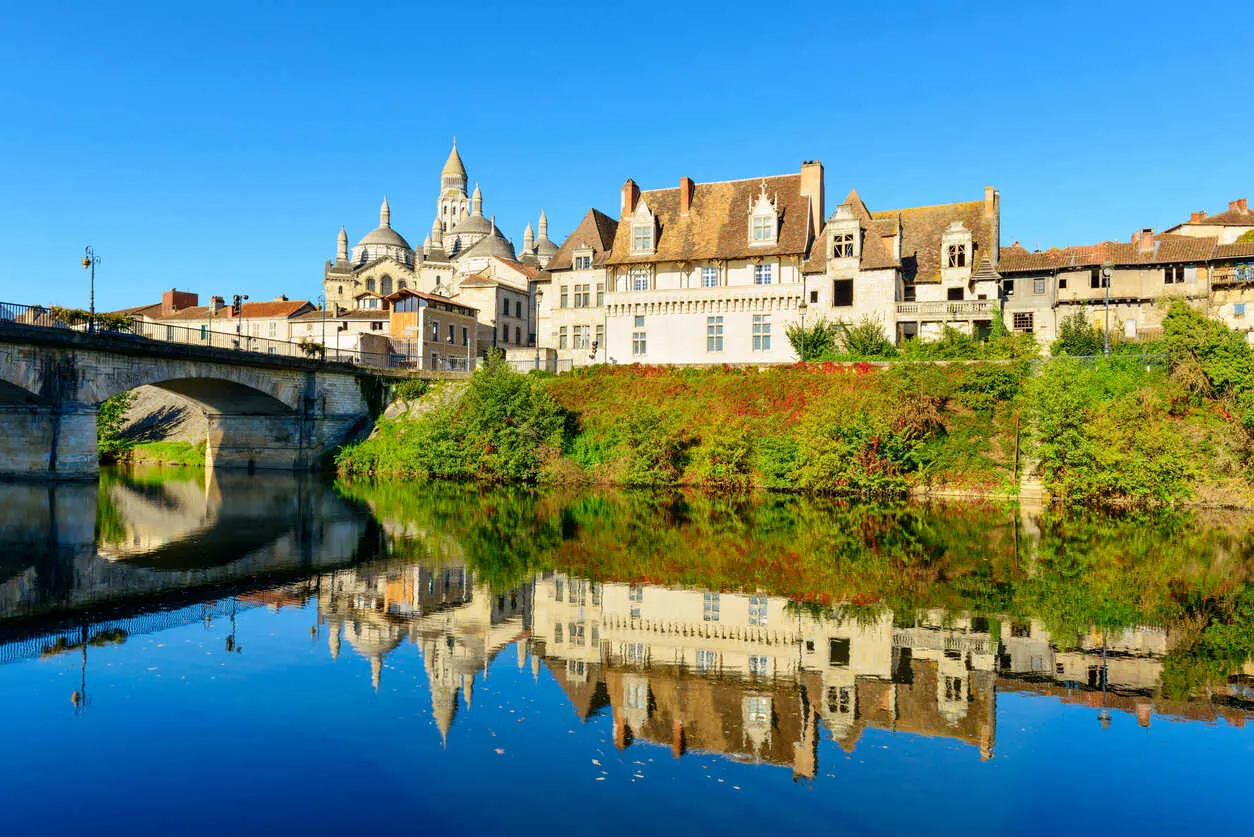
By Tuula Rampont
Located in southwestern France, about an hour and a half from Bordeaux, the Dordogne is one of the most captivating areas in all of France. Far from a secret, the British and many other Europeans have been purchasing full-time and part-time homes in this cozy region of sunflower fields, fortified medieval towns, and hilltop castles for decades. Steeped in history and culture, legend has it that there are 1,001 châteaux—many lining the romantic Dordogne River—within the region’s borders.
North American expats who have settled in this picturesque area spend their days dining at gourmet bistros, visiting blonde-stone villages, and happily discovering if the legend of the 1,001 châteaux is true.
If you ask expats in the Dordogne, they’ll likely tell you that it isn’t the easiest region in France to reach. “But we like it that way,” says Wendy Arbeit, a native New Yorker who lives part-time in the village of Monfort. For those seeking an authentic French experience, where daily life revolves around morning market visits and long, gourmet lunches followed by a round of golf or a riverside nap, the Dordogne is a perfect fit.
And you’ll have the budget for it all. The Dordogne is one of the most affordable regions in France, where many Americans have cashed in their U.S. homes to retire early and enjoy the slow rhythms of country life.
If you retire in the Dordogne, you’ll embrace an easy-going lifestyle. The region is a collection of charming stone villages, with the main central expat hub in Sarlat-la-Canéda. A beautifully restored medieval town, Sarlat is lined with restaurants, cafés, and bistros, and hosts several arts festivals and an English-language cinema. Expats often gather in the main square, Place de la Liberté, for a stroll through Sarlat’s open-air market—considered one of the prettiest in all of France—before enjoying lunch at a local restaurant.
The Dordogne boasts a flourishing foodie scene. Many American retirees plan their days around visiting different restaurants in picturesque villages. The region has the largest number of “plus beaux villages” (a classification system for France’s most beautiful villages) in the country.
Leisure activities include cycling along the “green path” bike trail by the Dordogne River, swimming in the municipal pool, and playing tennis at the Sarlat Tennis Club.
Living in the Dordogne is surprisingly affordable. A couple can live comfortably on a starting budget of $2,400 per month, depending on rental or property purchase costs. Homes can still be found for under $150,000, though some may require renovations. A two-bedroom home near Sarlat-la-Canéda starts at around $220,000 and often includes a garden and garage.
For rentals, retirees can find a two-bedroom furnished apartment or village home in Sarlat-la-Canéda starting at $700 per month, with prices in surrounding villages being considerably lower. Groceries for a couple average $600 per month, and utilities range from $100 to $200 monthly. Gas costs $6–$7 per gallon, while car insurance averages $70–$100 per month. Healthcare is an excellent value, costing around $150 per month on the higher end.
Expats in the Dordogne can connect with others through groups like “Americans Living the Dream in France,” organized by American Cecile Marie. This eclectic community gathers for events like Mexican-themed dinners and Thanksgiving celebrations, often hosted in members’ homes or meeting spots in Sarlat.
Souillac Golf and Country Club is another hub for expats, where some Americans have purchased properties to enjoy the club’s amenities.
One potential drawback to the Dordogne is its accessibility. A car is essential, as public transportation options like buses can be spotty and may not reach desired destinations. Many part-timers rent vehicles, while permanent residents usually purchase cars locally.
The Dordogne does have one airport in Bergerac, which connects to other parts of France, particularly Paris, but lacks direct flights to the U.S. A rail line runs from Bordeaux to Marseille, passing through the Dordogne. Many expats prefer flying into Bordeaux or Toulouse and taking the train to their final destination.
If countryside living amid rolling haystacks, sunflower fields, and blonde-stone villages—many considered the most beautiful in France—appeals to you, look no further than the Dordogne. An incredibly attractive spot for expats seeking la belle vie on a budget, this region is fast becoming one of the most popular French destinations for North American retirees.
Occitanie, France
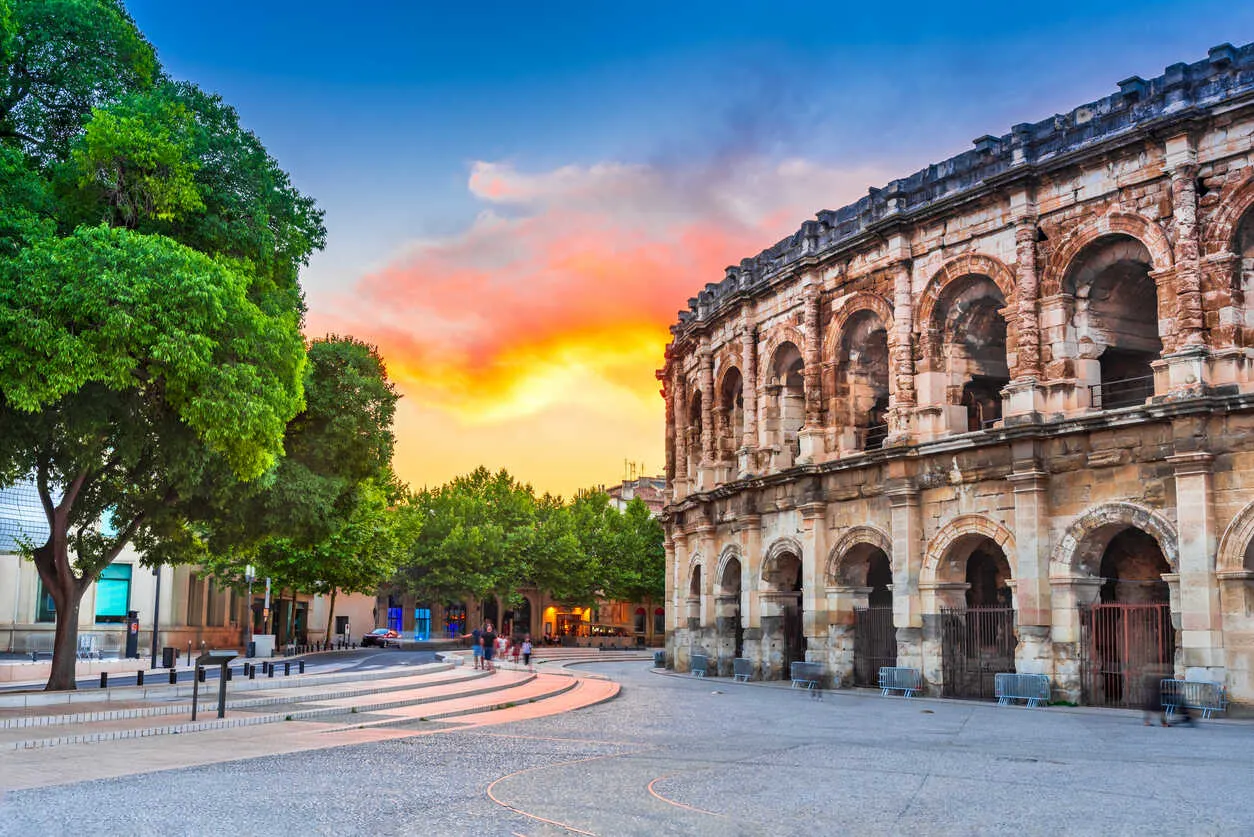
By Tuula Rampont
Often called the “other south of France,” Occitanie is a stunning region with a diverse geographical and cultural landscape. Stretching from the Provence-Alpes-Côte d’Azur region in the east to Nouvelle-Aquitaine in the west, which includes charming Bordeaux, this area offers something for everyone.
Formerly known as the Languedoc, Occitanie is home to larger cities like Toulouse and Provence-style gems such as Arles, Nîmes, and Uzès. Montpellier, one of France’s fastest-growing cities, is just 30 minutes from the seaside and is a highly attractive area for retiring or investing.
Whether you choose a fishing hamlet along the Mediterranean or a laid-back village near the Spanish border, Occitanie delivers a relaxed, south-of-France lifestyle—without the fanfare or high prices of the French Riviera.
Occitanie stands out as an affordable alternative to other southern French regions. While cities like Nice, Cannes, and Antibes are often priced out of reach, Occitanie remains under the radar. It offers lower housing costs without sacrificing the lifestyle perks of the south: incredible weather, stunning natural landscapes, and a gourmet, outdoor-focused way of life.
Towns in Occitanie don’t create the same buzz as St. Tropez or Cannes, but that’s part of their charm. The region is less crowded and less developed, making it an excellent choice for retirees seeking a quieter pace of life.
Life in Occitanie is vibrant and fulfilling. In Toulouse, a university town on the Garonne River, you’ll find pink-hued brick buildings, Spanish-inspired cuisine, and a thriving cultural scene. Residents often start their day with a café au lait on Place du Capitole, a central square that hosts festivals, shows, and concerts throughout the year. A short walk away, the Marché Victor Hugo offers a bustling covered farmers’ market where you can shop for fresh produce and enjoy lunch or an aperitif with friends. On my last visit, I enjoyed a Flamenco band serenading lunchtime diners just outside the market stalls.
Outdoor activities are plentiful thanks to the region’s sunny climate. Join locals for a bike ride or walk along the river, or pack a picnic from the farmers’ market to enjoy by the bridges that cross Toulouse, known as the “pink city.” Cultural opportunities abound in both Montpellier and Toulouse, with theaters, operas, concerts, museums, and exhibitions happening year-round.
For retirees looking to stay active, clubs and associations cater to a range of interests, including golf, cycling, hiking, history, and literature.
Living in Occitanie is affordable compared to other parts of France. A couple can live comfortably on a starting budget of $2,800 per month, with housing costs being the most variable expense. Near the sea or in city centers like Montpellier or Toulouse, expect to pay about 20% more for rentals than in nearby villages. A two-bedroom, 900-square-foot furnished apartment rents for around $1,300 in Montpellier and $1,100 in Nîmes. Buying a similar property costs approximately $200,000 in Nîmes and $230,000 or more in Montpellier.
Other monthly costs include $600 for groceries, $100–$200 for utilities, and $38 for a bus pass. Car insurance averages $70–$100 per month, while health insurance is incredibly inexpensive at $70–$150 per person.
Expats can find communities in cities like Toulouse, Montpellier, Arles, and Nîmes. Toulouse is especially welcoming, with an active group called Americans in Toulouse that organizes events such as Fourth of July picnics and weekly happy hours. Smaller towns like Albi, near Toulouse, offer the charm of village life while being just a train ride away from larger cities.
France’s efficient and affordable train system is a convenient way to travel throughout Occitanie and beyond, often eliminating the need for a car. You can journey from the Mediterranean coast to the Atlantic, stopping in cities like Narbonne, Carcassonne, Bergerac, and Bordeaux.
Montpellier and Toulouse both have regional airports with connecting flights through Paris to the U.S. Montpellier offers direct flights to Rome, Lisbon, and London Gatwick, while Toulouse also connects to Amsterdam, Madrid, and Dublin, among other destinations.
With over 300 days of sunshine annually, Occitanie is an attractive and affordable retirement destination. Less developed and less crowded than the French Riviera, the region offers an easy-going, south-of-France lifestyle with pink-stone cities, Mediterranean sunsets, and a welcoming atmosphere—an ideal place to settle in Europe.
How To Move Out of the U.S.
How To Move Out of the U.S.
The policy implications of the last election impacted your retirement funds, taxes, healthcare, and more. But you can protect yourself, your family, your future. In lots of safe, warm, friendly spots abroad, you can live comfortably on a budget from $2,000-$3,800 a month (all-in—housing and extras included). We’ll show you how—and where—to go.

By submitting your email address, you will receive a free subscription to IL Postcards, The Untourist Daily and special offers from International Living and our affiliates. You can unsubscribe at any time, and we encourage you to read more about our Privacy Policy.
LATIN AMERICA
Riviera Maya, Mexico
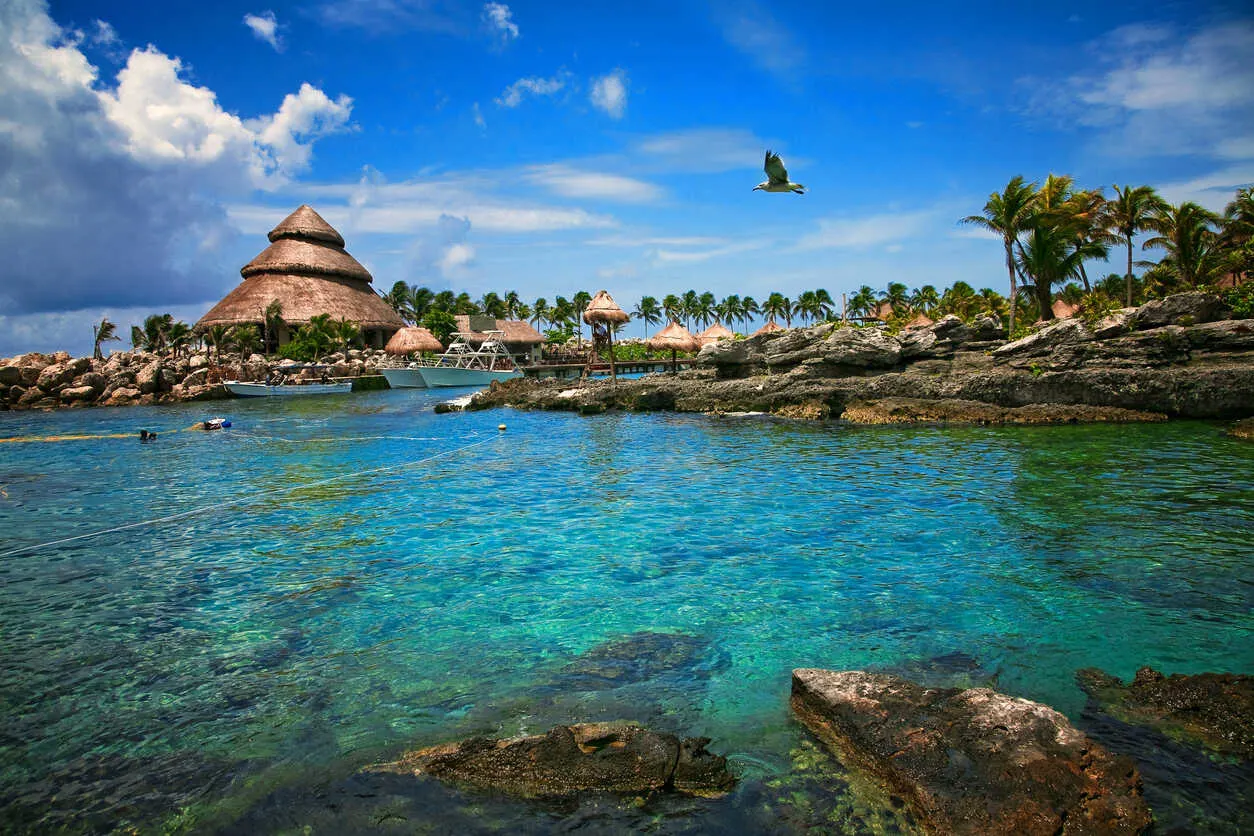
By Bel Woodhouse
With 340 days of sunshine overlooking crystal-clear Caribbean waters, the Riviera Maya is postcard-perfect. Palm tree-lined, sugary white sand beaches, abundant fun-in-the-sun activities, and all the shopping and modern amenities you could want or need are affordable on almost any budget.
The Riviera Maya’s 80 miles of pristine coastline run from Puerto Morelos (just south of Cancún) down to Tulum. It includes larger towns like Playa del Carmen and Tulum, known for their vibrant nightlife, as well as smaller, more relaxed towns like Puerto Morelos, Akumal, and Puerto Aventuras, all of which exude a soothing beach vibe.
Year-round warm weather supports a range of outdoor activities, including water sports, boating, sport fishing, scuba diving, golf, tennis, and pickleball. This dynamic region always has something happening, with plenty of like-minded people to join in the fun.
Interwoven with the natural beauty of the area are significant Mayan historic and cultural sites, making it one of Mexico’s biggest attractions. Visitors can swim in the clear, healing waters of cenotes or explore a five-million-year-old cave, ranked number three on National Geographic’s Top Ten Underground Walks.
Day trips to iconic sites like Chichén Itzá, Mexico’s top UNESCO World Heritage site, or the Tulum Ruins offer fascinating insights into the Mayan world. Statues and art prominently displayed along roadways and in towns further enhance the region’s historical ambiance.
Morning walks and evening strolls are popular ways to start and end the day, allowing residents to enjoy the near-perfect weather and meet up with friends. Friendships are easily formed through Facebook expat groups or over a meal. Dining out is a pleasure in the Riviera Maya, where international and Mexican cuisines are affordable. A great meal can cost just $5–$10, and even the Michelin Guide has taken notice, with HÁ restaurant earning recognition.
Food and family are central to Mexican culture, and the Riviera Maya exemplifies this. Fresh fruits and vegetables from local mercados (markets) make cooking a joy while also being budget-friendly and healthier than processed foods. Cooking classes are a popular way to delve into Mexican and Yucatán cuisines, with specialties like cochinita pibil, a slow-roasted suckling pig dish featured on Netflix’s “Chef’s Table: BBQ.”
The region’s low cost of living makes it possible to indulge in activities that might otherwise feel like luxuries. Dining out, taking day trips, enrolling in cooking classes, or enjoying wellness retreats are all within reach. Fresh foods and lush natural beauty also make the Riviera Maya a wellness destination. For instance, a liter of maracuya (passion fruit) juice costs just $2 in Playa del Carmen.
A couple can live comfortably on $1,500–$3,000 per month, depending on their chosen lifestyle and location. Beachfront properties or homes in central districts tend to cost more, but prices drop significantly just a few blocks away. For example, renting a one-bedroom apartment two blocks from the waterfront costs $500 per month unfurnished, while a furnished two-bedroom beachside rental in Playa del Carmen starts at $950 per month. Utilities, including electricity, typically cost around $150 per month, even when running air conditioning 24/7 during the summer. Many rentals include water, cooking gas, and internet, leaving only electricity and bottled drinking water as additional expenses.
Groceries are another highlight of affordable living in the Riviera Maya, averaging $350 per month for a couple. Dining out is also budget-friendly, with plenty of options to enjoy meals at $5–$10 per person. Entertainment and activities, such as exploring local attractions, visiting cultural sites, or participating in expat social events, add approximately $250 per month to expenses. Healthcare is accessible and affordable, with public healthcare costing around $80 per month, while household help, often a luxury elsewhere, is affordable at about $150 per month for three visits per week. Including incidentals at $150, a monthly budget for a couple typically totals around $1,880.
The affordability extends to travel. Cancún International Airport, just over 30 minutes from Playa del Carmen, offers frequent flights to the U.S., often for under $150. International flights are also available from Cozumel and Tulum.
The Maya Train is an economical way to explore southern Mexico, including Chiapas. Public buses are another affordable option, with air-conditioned rides to the airport costing around $12.
With near-perfect weather, welcoming expat communities, a healthier lifestyle, delicious food, and a low cost of living, the Riviera Maya offers retirees and expats a relaxed and fulfilling beachside experience.
Placencia, Belize
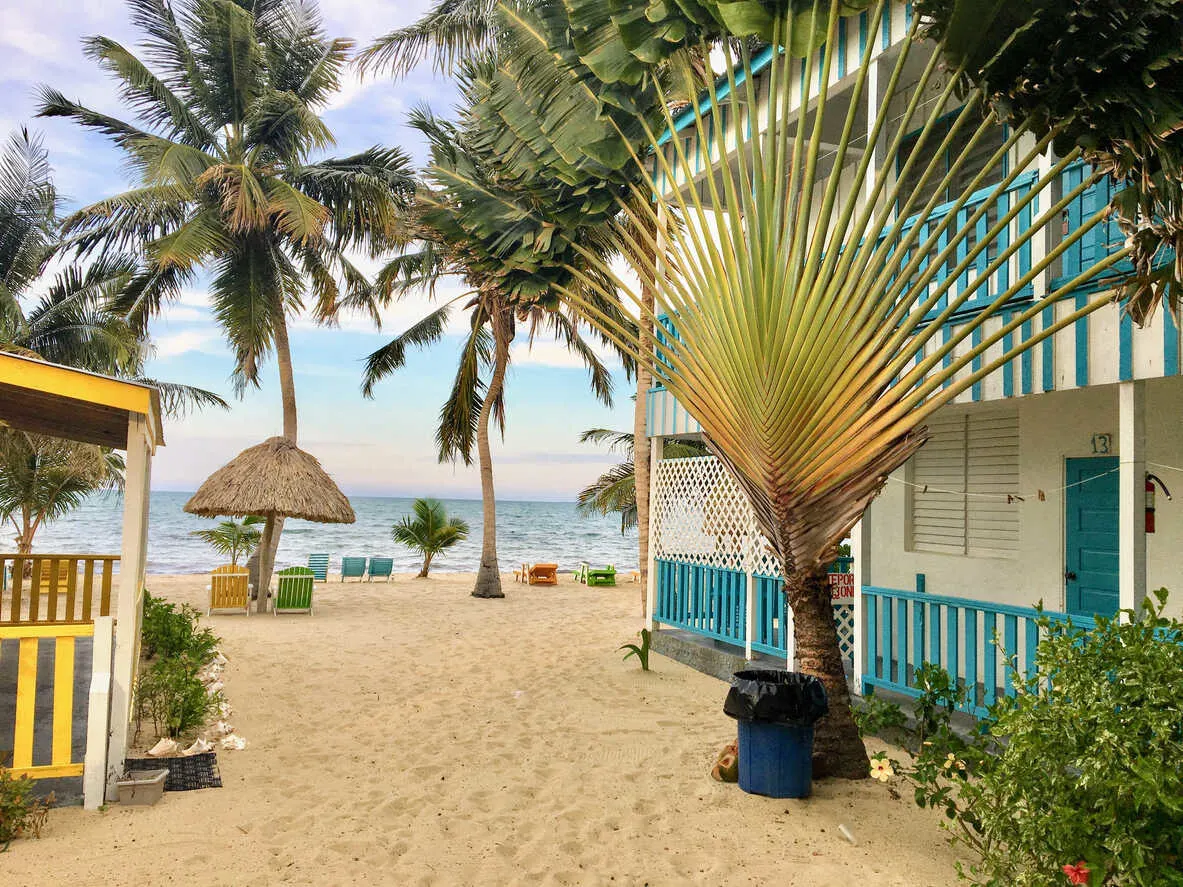
By Shane Kenny
It’s late afternoon, the heat of the day is starting to give way to a cooler evening, and you’re sitting on a Caribbean beach sipping a rum punch, living on island time. Gone are the hours spent sitting in traffic or rushing around between activities with family and friends. Instead, you can enjoy the sea breeze and days filled with no particular plans.
This is what sets Placencia Village apart from the rest of Belize. Part island, part mainland—it’s the best of both worlds. The culture is laid-back, things get done when they get done, and very few people seem to be in a real hurry. Before long, you’ll find yourself saying, “There’s lots of traffic today,” as you wait for three cars to pass before turning onto the one paved road in and out of the village. Need something not available in the village? No problem—just head north for easy access to the other villages, towns, and cities of Belize.
Locally, there is plenty to do in Placencia itself. Get that SCUBA certification you’ve always talked about. Join a group of expats for a day on the water with a lunch stop at one of the 600+ islands inside the world’s second-largest barrier reef. Enjoy music at one of the local watering holes while making new friends. Go fishing. Take a day trip to one of the many Mayan archaeological sites around the country. Volunteer at the local Humane Society or Rotary Club. You can choose to do as little or as much as you’d like.
Since life isn’t all about fishing trips and listening to music with friends, what does daily life look like in Placencia?
Grocery shopping involves choosing from one of eight bodega-style stores. Everyone has a favorite but often visits the others when searching for particular items. Expect to spend about $250 per month on groceries for two people. Learning to shop and eat like a local will help keep your grocery budget down. For instance, swapping Lay’s potato chips for locally made plantain or tortilla chips can save money.
Placencia also has four main vegetable stands, primarily offering seasonal produce from Belize, with some items imported from Mexico or Guatemala. Each stand has its own schedule, and knowing when fresh produce arrives ensures you’ll get the best selection for your weekly shopping.
Housing in Placencia falls into two main categories. Traditional wooden houses, typically raised on stilts to stay dry during the rainy season, are one option. The other is more modern concrete homes. Rental prices depend on proximity to the village center and the beach, as well as the style of the house. Monthly rents range from $1,000 for a two-bedroom home on the lower end to $2,500 or more for high-end properties. Most landlords require a 12-month lease, a security deposit, and first and last month’s rent. Plan to spend an additional $250 to $300 per month on utilities such as water, electricity, cooking fuel, and internet. Utility costs largely depend on how much you choose to run your air conditioner.
Aside from entertainment, expats should budget $100 per month for a visa to remain in Belize. Most expats live here on a tourist visa valid for 30 days. Renewals are handled at the nearest immigration office, which for Placencia is in Independence. You can renew your visa for 30, 60, or 90 days at a time, with no limit on the number of renewals before leaving the country. After living in Belize for 50 of 52 consecutive weeks, you can apply for permanent residency, eliminating the need for visa renewals.
While you may never want to leave paradise, there may come a time when you need to return to your home country. Fortunately, Placencia has a local airport connecting to Belize City’s international airport, providing access to the rest of the world. Alternatively, you can drive to Belize City in about 2.5 hours via the newly opened Coastal Highway.
Once you settle into your new life, you may find you never want to leave. Living in the fresh air on the edge of the Caribbean, with a budget of about $2,500 per month, sounds like paradise. Add to that Belize’s English-speaking population and a fixed exchange rate of $1 US Dollar to $2 Belize Dollars, and it’s easy to see why more expats are seriously considering Placencia.
Panama City, Panama

By Rosalind Baitel
Panama City, Panama: A vibrant, cosmopolitan, livable city offering culture, nature, affordability, and a lifestyle where you truly can have it all… including ocean views.
Make your life as simple as possible and have fun—that’s the goal. As a Louisiana native who’s lived in Panama for 30 years, I clearly chose the right place. Panama City—Panama’s capital—is a vibrant, cosmopolitan, livable city offering culture, nature, affordability, and a lifestyle where you truly can have it all… including ocean views. (And unlike New Orleans, where I’m originally from, Panama City isn’t threatened by hurricanes.)
For me, cosmopolitan living means having access to restaurants and nightlife that rival great cities around the world. If you’ve ever been to Madrid—I was just there—it’s very comparable. I regularly enjoy a vast variety of cultural events, including opera nights and other music events. Recently, I attended Panama Fashion Week, which is always trendy and hip; a wine festival run by Felipe Motta, which has lovely wine stores around the city; and a new restaurant called Villa Ana, which features a jazz bar with live music, a rooftop bar, a cigar bar, and fabulous food. It’s housed in a beautifully renovated colonial manor that reminds me of New Orleans.
Despite the futuristic city skyline, it’s important to understand that this bustling capital is a city of neighborhoods, each with its own identity and community feel, as well as access to important goods and services often within walking distance.
For example, my life in the central El Cangrejo neighborhood is wonderfully convenient. I regularly walk to the dry cleaners, supermarket, bakery, and fruit and vegetable market. Plus, we have a plethora of local pubs and restaurants. I love Taverna 21 on Via Argentina, my go-to for afternoon happy hour meetings. I can walk there through my neighborhood park. I do have a car, but we also have a metro line, and I take advantage of inexpensive Ubers when I want to have a drink or avoid parking hassles.
Living in Panama City is surprisingly affordable for a modestly upscale lifestyle. Rent ranges from $1,000 to $2,500 per month, depending on location and size. Monthly utilities, including electricity, typically cost between $100 and $250, with water adding up to $25. Groceries average $500 to $600 per month for a couple. High-speed internet is only $25 to $40, and transportation expenses, whether you rely on Ubers, the metro, or maintaining a compact car, range from $75 to $200 per month. Entertainment, including dining out and attending events, adds $200 to $400 to the budget.
Retiree discounts are a major plus in Panama, significantly reducing monthly costs. Discounts on movies, restaurants, airline tickets, hotels, utility bills, prescriptions, and doctor visits provide substantial savings. Major hospitals in Panama City are among the best in Latin America, and the proliferation of express care clinics adds convenience and affordability to healthcare options.
I’m always meeting and welcoming new expats because Panama City life makes it easy for new arrivals to interact with locals, participate in community activities, and feel a part of their new home. You’re welcome to join us at the monthly Expat Welcome Coffee, the bimonthly Panama Business Club social, or the monthly American Society Happy Hour to meet interesting expats and locals, both working and retired.
One of the things I enjoy most is the abundance of free neighborhood activities—outdoor concerts, dance and exercise classes, sporting events, and more. Once a month, there’s a mercadito in my neighborhood park with a festival atmosphere. There’s music, food, and plenty of shopping opportunities. I always pick up something—a cute belt, sunglasses, a scarf, or a handmade gift—and nothing I’ve bought has been over $5. Panama City is a very social place, and you don’t need to spend much to get to know your neighbors and feel a part of the community.
As a center for world trade and commerce, Panama City is a melting pot of cultures, religions, and lifestyles. I interact with international residents from all over and enjoy the blending of traditions. I happen to be Jewish, and we belong to a local reform synagogue that includes both local Jewish families and foreign transplants. There are also temples, churches, and mosques—truly a place where every religion is represented.
In sum, Panama City is one of the most welcoming places for expats to live an easy, cosmopolitan lifestyle in great weather. My one complaint? The humidity isn’t conducive to having tamed hair—but it’s great for the skin, which is what matters most.
I thoroughly enjoy my walkable neighborhood and glamorous city life. Weekends often find me driving from Panama City’s Pacific Coast to my home on the lush, beach-lined Caribbean Coast, just two hours away, or visiting expat friends on Taboga Island, a short 30-minute ferry ride away. Panama offers countless opportunities for exploration and relaxation.
If life in Panama City sounds fabulous… that’s because it is. It really is.
Oaxaca, Mexico
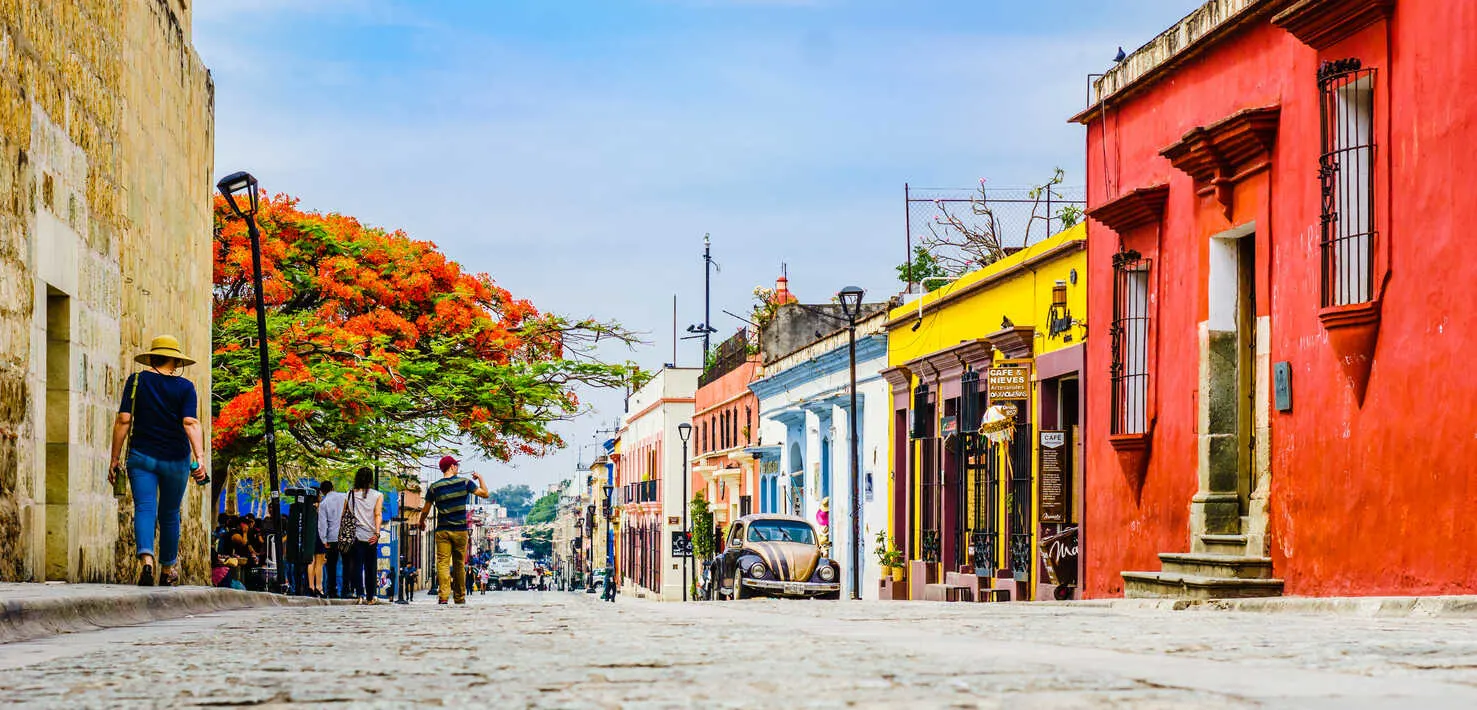
By Donna Shields
After logging some 11,000 miles on a motorcycle, I’ve come to understand Mexico a little better. Its diversity is remarkable—in landscapes, food, climate, and its indigenous peoples with their varied customs and languages (it’s not all Español!). While every region has its standout features, Oaxaca (both a state and a city), located in southeastern Mexico, quickly rose to the top of our relocation list. If an authentic, culturally rich food scene is a priority, then Oaxaca is your city. Long considered in a class of its own, Oaxacan cuisine has a well-deserved reputation for excellence. Oaxaca offers the best of both worlds: an urban lifestyle that’s just 20 minutes away from villages where life feels like a step back in time. The neighboring Zapotec communities are ground zero for exploring pre-Hispanic culture, foods, and handcrafted products. This contrast between city and rural village life appeals to those seeking unique and out-of-the-box experiences.
Everyday life in Oaxaca can be filled with group social activities or just as easily enjoyed solo. Expats can join hiking groups, participate in textile workshops, attend language exchanges, or take cooking classes. Alternatively, you can explore museums, visit neighborhood mercados, relax in the zócalo (main square) to people-watch, or delve into the infinite nooks and crannies of street vendors, bodegas, coffee shops, and mezcal tasting bars. Public transportation options like buses and colectivos (shared vans) can quickly take you into nature. Weekly day trips to nearby villages showcase their specialty crafts: wool weaving on traditional looms, red pottery in one village, and black pottery in another. Nearby archaeological sites and rural mountain villages are also worth exploring, and with the recent opening of a new highway, the beach and Pacific coastline are now just three hours away.
This diverse lifestyle means plenty of housing options. Within the city, you’ll find modern apartments, older homes renovated into apartments, and freestanding colonial houses. Finding the right rental often involves searching local Facebook housing pages, working with realtors, or using Airbnb-like platforms. A short-term rental for 2–4 weeks upon arrival is recommended to get a feel for neighborhoods. Photos alone don’t always tell the full story, so it’s best to view properties in person before signing a lease. A furnished two-bedroom rental, walkable to most city activities, costs about $1,000–$1,200 per month, utilities included. Living 15–20 minutes outside the city reduces rent significantly but requires additional transportation. Within the city, buses cost about 50 cents per ride, and taxis are $3–$4. Walk-in doctor visits typically cost $50, and some pharmacies offer free consultations for minor ailments. Many medical and dental professionals speak some English.
Oaxaca has a well-established, welcoming expat community scattered across various neighborhoods. While you may not have an expat neighbor next door, connecting with people is relatively easy. The Oaxaca Lending Library serves as a social hub for expats with an extensive calendar of events. Yoga classes, live music, and pop-up gallery openings have helped me meet a diverse circle of people, both expats and Mexicans. One aspect I’ve enjoyed is the cross-generational friendships, ranging from 30-somethings to retirees. This mix allows me to experience Oaxaca through different lenses beyond that of an American retiree. I’m here to embrace a new, different Mexican lifestyle, not replicate the one I left behind.
Getting in and out of Oaxaca is straightforward. The international airport, about 20 minutes from the city center, connects directly to major U.S. airports, Mexico City, and other large Mexican hubs. Ground transportation is also important for expats, many of whom arrive without a car. The centrally located ADO bus station offers convenient service to points across Oaxaca state and beyond. Collectivos, shared vans with scheduled routes, provide affordable alternatives to destinations not served by buses.
Oaxaca is a bustling, vibrant place filled with energy, yet it also offers a rural, peaceful side. Combined with the accommodating and welcoming Oaxaqueños, we’ve found a place that truly feels like home.
The Central Valley, Costa Rica
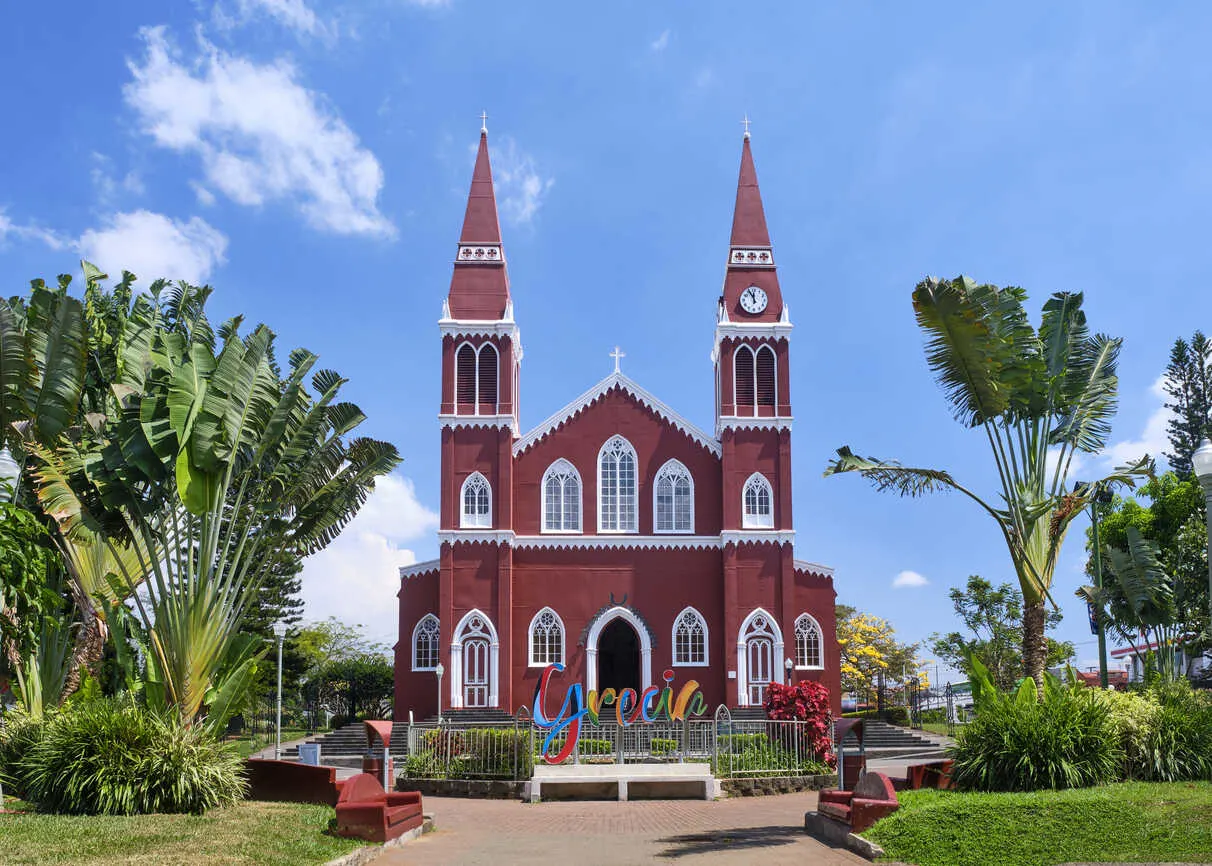
By Bekah Bottone
The Central Valley is Costa Rica’s most popular expat destination, offering a unique combination of natural beauty, cultural richness, and modern convenience. This verdant plateau sits at an elevation of 2,200 to 5,000 feet, gifting it with a spring-like climate year-round. Daily highs hover in the 70s to low 80s, while the evenings cool to the 60s, often eliminating the need for air conditioning or heating. The valley’s lush landscapes are complemented by rolling hills, volcanoes, and pockets of cloud forest, creating a tranquil yet dynamic environment.
At the heart of the Central Valley is the capital city of San José, Costa Rica’s bustling cultural and economic hub. From theaters, museums, and art galleries to international restaurants and modern shopping centers, San José provides access to a vibrant urban lifestyle. Despite the city’s hustle and bustle, nature is never far away. Residents can easily escape to hiking trails, botanical gardens, or nearby national parks on weekends.
Outside the capital, smaller towns like Atenas, Grecia, and San Ramón offer a slower pace of life while maintaining proximity to essential amenities. Atenas is famous for its idyllic climate—often touted as “the best in the world”—and has a lively social scene with weekly markets and community events. Grecia, with its iconic red-metal church and welcoming expat community, provides a small-town feel and affordable living. San Ramón, known as the “City of Poets and Presidents,” blends historical charm with a strong local community.
The Central Valley’s accessibility is another key draw. Juan Santamaría International Airport in Alajuela connects residents to North America and beyond. The area is also well-served by a network of buses and affordable ride-hailing services like Uber, making it easy to travel locally or explore the region.
Life here is remarkably affordable. Rent for a fully furnished two-bedroom apartment in Escazú starts at $1,150 per month, while in smaller towns like Grecia or Atenas, charming homes are available for under $150,000. Utilities are modest, with electricity and water costing around $50 to $150 per month, depending on usage. Grocery shopping is a highlight, thanks to the valley’s rich volcanic soil, which produces a bounty of fresh fruits and vegetables sold at weekly ferias (open-air markets). For about $20, you can stock up on enough produce to last a week.
Expats often note how the Central Valley’s climate and lifestyle naturally encourage physical activity. Many enjoy walking to markets, taking yoga classes, or hiking the nearby trails. Social life is vibrant, with meetups and activities catering to all interests. In Grecia, the Nuevos Amigos group welcomes newcomers, while Atenas hosts the Women’s Social Group and regular community potlucks.
Healthcare in the Central Valley is another major advantage. The region is home to some of Costa Rica’s top hospitals, including private facilities like CIMA Hospital in Escazú and Clinica Biblica in San José, as well as public healthcare options through the Caja system. Expats praise the quality of care, which is often a fraction of the cost compared to the U.S.
Whether you prefer the energy of San José, the charm of Grecia, or the quiet hills of Atenas, the Central Valley offers something for everyone. With its perfect weather, supportive communities, and blend of modern amenities and natural beauty, it’s no wonder this region continues to be a top choice for expats seeking a fulfilling life abroad.
The Coffee Triangle, Colombia
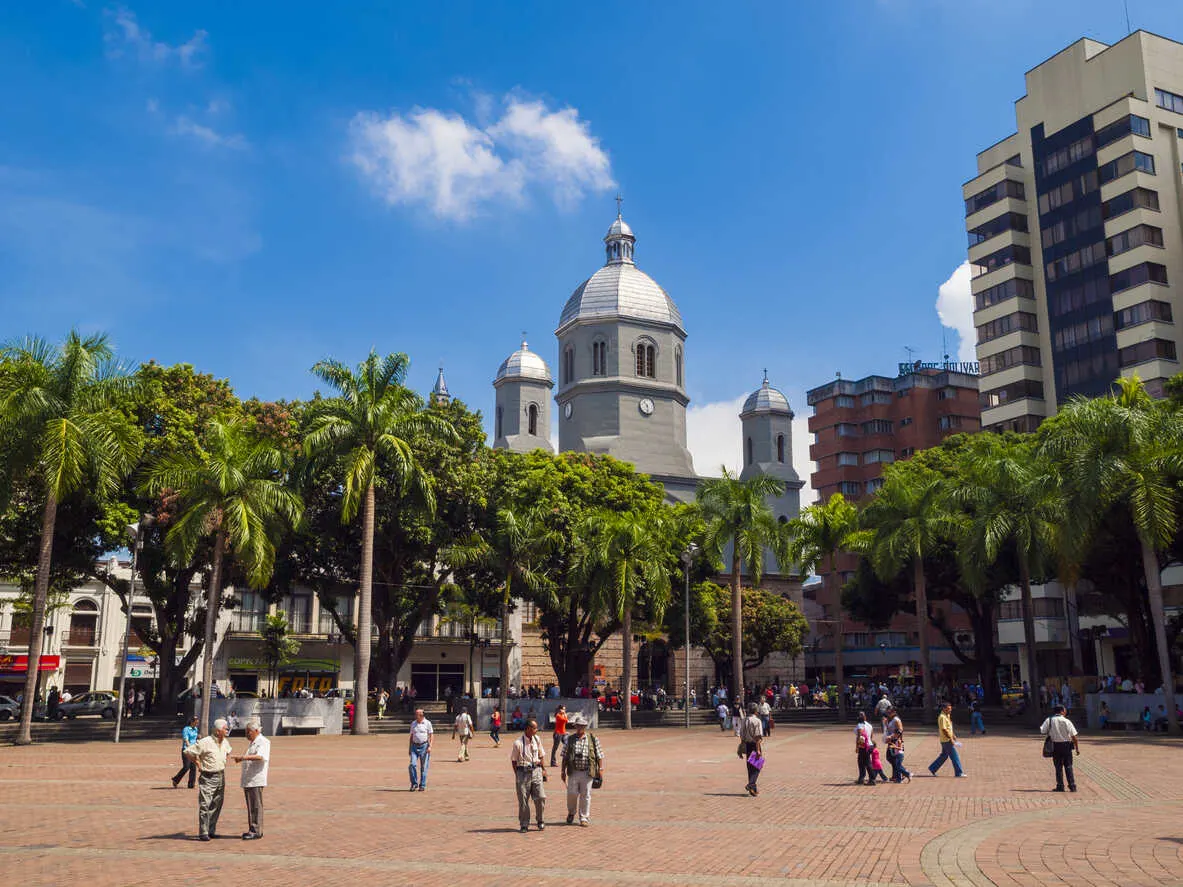
By Erin Donaldson
Imagine this: the sun rises over lush fields of specialty Colombian coffee, casting a warm glow across the landscape. You’re sitting on a porch with a steaming cup of locally made hot chocolate, watching vibrant tropical birds gather at a nearby feeder, their colors vivid and varied. The gentle sounds of roosters crowing mix with the rustle of orchids swaying in the breeze.
Welcome to the Coffee Axis—a region where traditional farm culture meets modern infrastructure, nestled in a stunning landscape of cloud forests, jungles, dry savannahs, and lush river valleys. For expats, lifestyle options here are as boundless as the landscape itself.
In Manizales, you’ll find beautiful architecture, coffee and dairy farms in the cool yet temperate high-altitude climate of the Andes, and an active volcano dusting the town with ash daily. Known as Colombia’s safest city and its fourth most expensive, Manizales offers vibrant theater, tango dancing, talented musicians, quality sports facilities, and a smaller expat community for a close-knit feel.
In Pereira, howler monkeys echo through the countryside, while the city pulses with urban energy—art, salsa music, dance, and commerce add to its vibrancy, while an international airport ensures convenience. Downtown, businessmen sip coffee as street vendors call out their offers, and women, dressed in vibrant colors, add flair to the scene.
Armenia offers a gentler pace, with rolling hills, cool foggy mornings, newer infrastructure, and valley views. Life moves at a relaxed rhythm as retirees enjoy their morning coffee, with many owning the classic Aguadeño hat and light cotton poncho. Charming, colorful towns and coffee plantations are just minutes away, making Armenia ideal for a laid-back lifestyle in the heart of coffee country.
The cost of living as an expat in this region depends on personal needs and habits. A retired couple can live comfortably on around $3,000 USD per month, while a solo traveler can live well on $1,000–$1,800 USD per month. High-quality rentals average around $500 USD per month for an apartment or about $1,000 USD for a nice house or even a country estate. If you prepare most of your meals at home, a monthly grocery budget of $500 USD is sufficient. Transportation is budget-friendly, with weekend bus trips between towns costing around $100 USD—or less if you return the same day. Electricity, water, and internet costs are lower than in many other countries, adding to the region’s affordability.
Healthcare in the Coffee Axis is affordable and high-quality. Dental cleanings start at $20, while fillings cost about $50—prices significantly lower than those in developed countries. The region also boasts excellent road infrastructure, making travel smoother and more efficient compared to larger cities like Bogotá or Medellín, where living costs have risen rapidly.
The expat scene here varies by city. Manizales has a smaller, close-knit community, while Pereira, with its lively atmosphere, boasts the largest group of expats in the region. Armenia strikes a balance between the two, offering a laid-back vibe with a growing community of foreign residents. English-speaking meetups, popular in cities, provide opportunities to connect with others. American-style bars, restaurants, and coffee shops often host group events and are favorite spots for sports fans to watch games.
Colombia’s central coffee-growing region, known as the Coffee Axis (Eje Cafetero in Spanish), is quickly becoming a favorite destination for expats who appreciate mountain views, warm-hearted locals, and fresh, locally grown coffee. The people here are friendly and welcoming, always ready to offer a helping hand or share a smile. Whether you prefer the energy of a larger city or the charm of a smaller town, a warmer or cooler climate, this region offers a lifestyle to match every preference—and plenty of local culture to dive into.
Ecuador Highlands
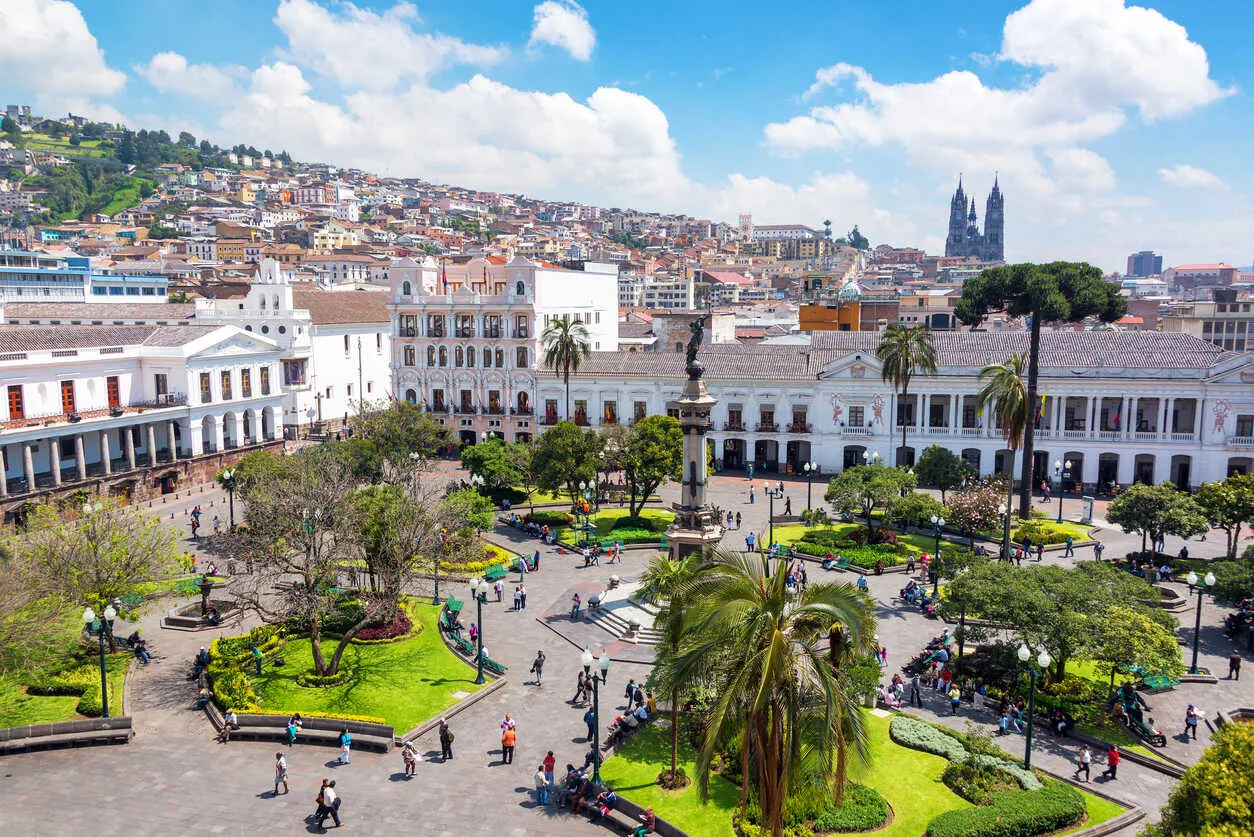
By Joel Kaplan
The Ecuador highlands, known as the Sierra region, attract retirees with their mild year-round climate, breathtaking landscapes, and vibrant culture. Cities like Cuenca and Quito blend colonial charm with modern conveniences, offering an affordable yet high-quality lifestyle. The cost of living is significantly lower than in many Western countries, with housing, healthcare, and daily expenses providing excellent value.
The region’s rich culture, reflected in traditional festivals, indigenous markets, and artisan crafts, creates a vibrant and welcoming environment. The Andes Mountains offer stunning scenery, outdoor activities, and a relaxed pace of life. Retirees also appreciate the proximity to excellent healthcare facilities, particularly in cities like Cuenca, which boasts world-class hospitals.
With a strong expat community, retirees find social opportunities while enjoying the blend of local traditions and modern amenities. These qualities make the Ecuadorian highlands a prime destination for those seeking a fulfilling, affordable retirement abroad.
Life in the Ecuador Highlands offers a tranquil yet engaging day-to-day lifestyle, appealing to retirees seeking a balance of cultural immersion, natural beauty, and modern convenience. The community vibe is welcoming, with a mix of friendly locals and a growing expat community, particularly in cities like Cuenca and Cotacachi. This blend of cultural exchange and camaraderie makes it easy to forge new friendships and engage in local traditions. Markets brimming with fresh produce, artisan crafts, and vibrant textiles are central to daily life, providing a colorful rhythm to routine shopping.
Recreational opportunities abound, from hiking scenic trails in the Andes and birdwatching in cloud forests to enjoying yoga classes, language lessons, and art workshops. Cultural attractions include UNESCO World Heritage Sites in Cuenca and Quito, charming colonial plazas, and a calendar rich with festivals celebrating indigenous and Catholic traditions.
For outdoorsy retirees, nearby attractions like Cajas National Park offer stunning alpine scenery, while thermal springs in Baños or Papallacta provide relaxation. In the north, near Cotacachi, the stunning Cuicocha Crater Lake and Peguche Waterfall combine natural beauty with cultural significance, offering unforgettable experiences. The slower pace, temperate climate, and accessibility to quality healthcare make the region ideal for retirees who value a healthy, active lifestyle with a touch of adventure and a strong sense of community.
The Ecuador Highlands are renowned for their affordability, making them a popular choice for retirees. A retired couple can comfortably live on $1,500–$2,000 per month, depending on lifestyle choices. Housing is remarkably affordable, with a fully furnished two-bedroom apartment in cities like Cuenca or Loja costing $500–$800 monthly. Utilities, including electricity, water, and internet, add around $100–$150.
Food expenses are modest, with locally sourced produce from markets costing $200–$300 monthly, and dining out at restaurants averaging $5–$8 per meal. Transportation is inexpensive, with city buses costing as little as $0.30 and taxis typically under $5 for short rides. With public transportation so affordable, most expats choose not to own a car.
Healthcare is a major draw, with high-quality services available for a fraction of U.S. costs. Public healthcare insurance ranges from $75 to $100 per person, while private insurance plans range from $125–$175 per person monthly.
The Ecuador Highlands boast a thriving expat presence, especially in cities like Cuenca, Vilcabamba, Quito, and Cotacachi, where retirees are drawn by the affordable lifestyle, temperate climate, and cultural vibrancy. These areas offer expat-oriented amenities, such as English-speaking doctors, international restaurants, and social clubs, making it easy to integrate.
Cuenca, a UNESCO World Heritage Site, has a particularly active expat community with events, workshops, and volunteer opportunities that foster connections. Vilcabamba offers a quieter, nature-focused lifestyle with a tight-knit group of retirees.
Accessibility is excellent, with major airports in Quito and Cuenca offering connections to international hubs. An abundance of bus systems and affordable taxis make regional travel easy, while many areas are walkable. Settling in is straightforward, as locals are welcoming, and many expats share experiences and resources to assist newcomers. This supportive atmosphere helps retirees quickly find their footing and feel at home in the highlands.
With its perfect blend of affordability, natural beauty, cultural richness, and a welcoming community, the Ecuador Highlands stand out as a premier retirement destination for 2025. For retirees seeking adventure, comfort, and a high quality of life, this region offers an unparalleled opportunity to thrive.
Coronado, Panama
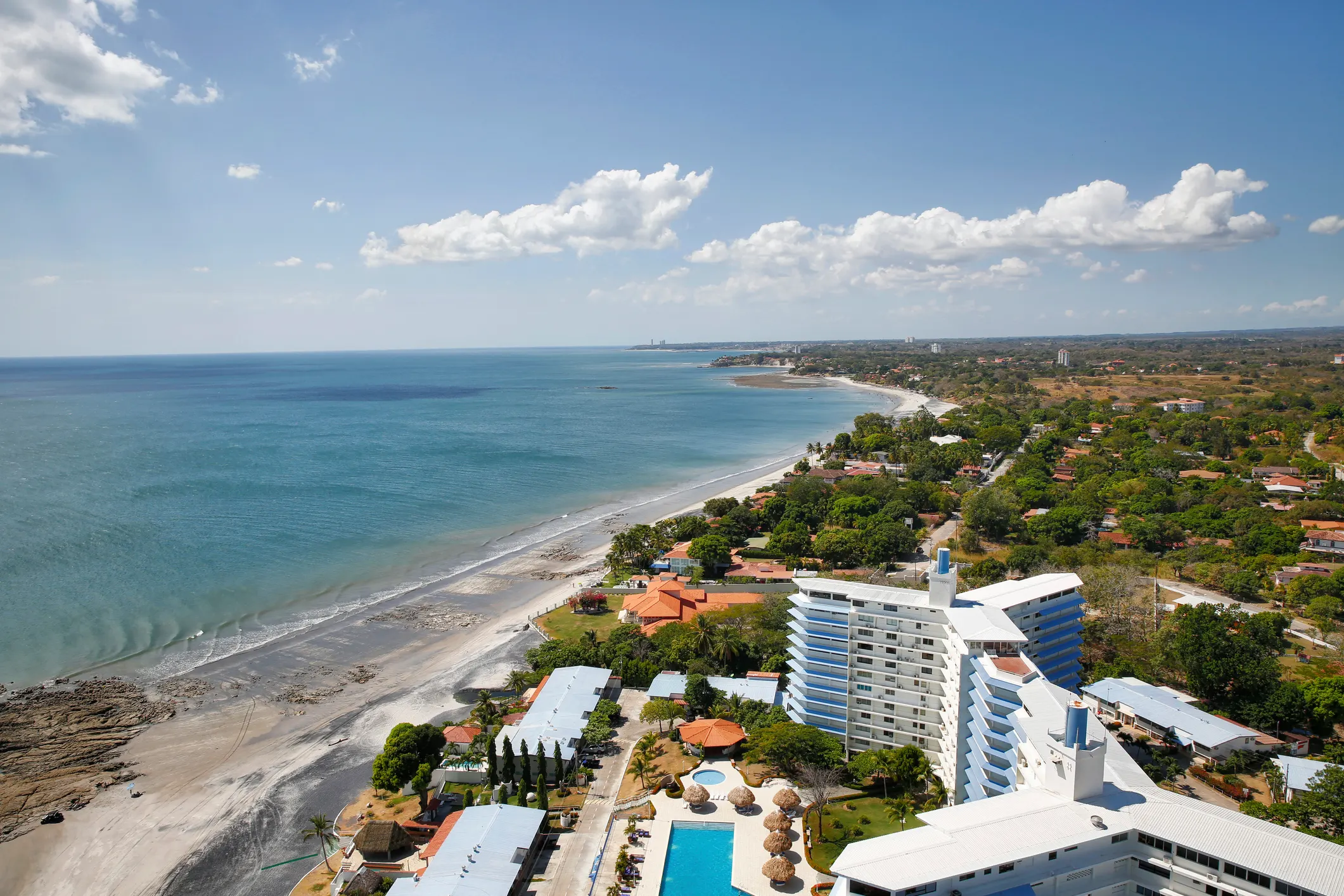
By Jess Ramesch
“At home, I feel like a goddess in my luminous little slice of heaven. This is where the light lives. Nearly every day I open my eyes to the spectacular sight of the sunrise over the warm, tropical Pacific.”
Once upon a time, Coronado—with its clean, pristine beach and quiet, exclusive enclaves—was a favorite weekend destination for Panama City dwellers. Just an hour’s drive away, in the sunny region known as the Arco Seco, or Dry Arc, Coronado made perfect sense as a place to own a second home.
Then, the El Rey group decided to build a shiny new supermarket. A couple of retail plazas followed. Then came a prestigious clinic. Lo and behold, this sleepy weekender town morphed into a bustling hub for surrounding coastal communities.
Today, convenient Coronado is all grown up—and a fantastic place to live year-round.
That’s why I chose it. I wanted a stellar apartment in a neighborhood where a single writer like myself could lead a happy, active, fulfilling life. I’d been living in Panama’s capital, with its never-ending smorgasbord of city delights, thinking “someday” I’d move to a quiet beach or mountain town. For me, that “someday” arrived in 2022. But if I was going to decamp to the countryside, I needed a spectacular alternative.
Enter Coronado, where a two-bedroom apartment with an ocean view costs as little as $170,000. My apartment is spacious for a beach condo at 1,130 square feet. There’s only one bedroom—a large one with a master bathroom that looks like it belongs in a five-star hotel. I also have a small balcony, a powder room, and a laundry room. I paid $155,000.
I got more than a stunning view in the bargain. My building is an elegant tower on a golf course (an 18-hole George Fazio design) surrounded by trees, with views of the beach, ocean, and Campana mountain. On the lobby level, we have a massive pool and social area with seating and tables, plus spots to swing on hammocks. The rooftop includes additional social areas, another pool, a game room, a gym—all with ocean views—and a sauna. Everything is beautifully maintained, and my monthly fees are just $262, which includes my water bill.
What you get for your money in Coronado is just plain incredible. Renting in Coronado offers great value, too. A two-bedroom condo typically rents for $1,300 to $1,800 per month. Utilities, including electricity and water, cost between $60 and $275 monthly, depending on usage. Internet costs range from $25 to $50, and cell phone plans vary from $15 to $80. Grocery bills for a couple average between $400 and $600 per month, while entertainment, such as dining out or enjoying local activities, adds another $200 to $400.
The vibrant community makes Coronado an all-around great place to live. I’m healthier and happier here. I don’t have to drive to the gym, and I eat very well. Bright greens and blues—nature’s daily gift—are uplifting and good for the soul. I enjoy these views and ocean breezes while writing at home, savoring fresh tuna tataki at Las Bóvedas de Ensenada, or jamming with friends on the weekends.
Coronado is one of the most active, welcoming expat destinations on the planet, so making new friends was easy. My building, like many others, hosts regular activities, so I was meeting people and socializing from day one. Coronado is a diverse community—important to me—and I now have both expat and Panamanian friends with homes here. My daily interactions, whether at cafés or while running errands, are always pleasant.
The people in Coronado are polite and welcoming, which I deeply appreciate. The staff at Mail Boxes Etc., where I pick up Amazon packages, and the cashiers at Riba Smith supermarket, where I find everything from Panamanian cobia to Beyond Burgers, are always friendly. The local Arrocha drugstore, where I get 20% off medications and last-minute gifts, is another favorite spot.
Practical conveniences abound, including pet and home improvement stores, banks, seamstresses, dry cleaners, vets, dentists, and the excellent clinic just beyond my entrance gate. A special shout-out to the insurance-provided roadside assistance guys who’ve quickly and cheerfully helped me with tire changes and jump-starts.
Transportation is also affordable. Fuel and maintenance for a compact car cost $75 to $200 monthly. Alternatively, taxis and rideshares are widely available and inexpensive.
If you dream of living on or near the beach but also want proximity to a major world capital with upscale hospitals and an international airport, consider Coronado.
Housing options range from houses to cottages to condos, suiting a variety of needs. Whether you’re introverted or extroverted, there’s a group or activity for you. Options include pickleball, trivia, karaoke, hiking, yoga, church groups, and community outreach. Restaurants offer salsa and blues nights alongside diverse cuisines, from Thai and French to Peruvian and Italian.
The beach, of course, is gloriously free.
Colonial Highlands, Mexico
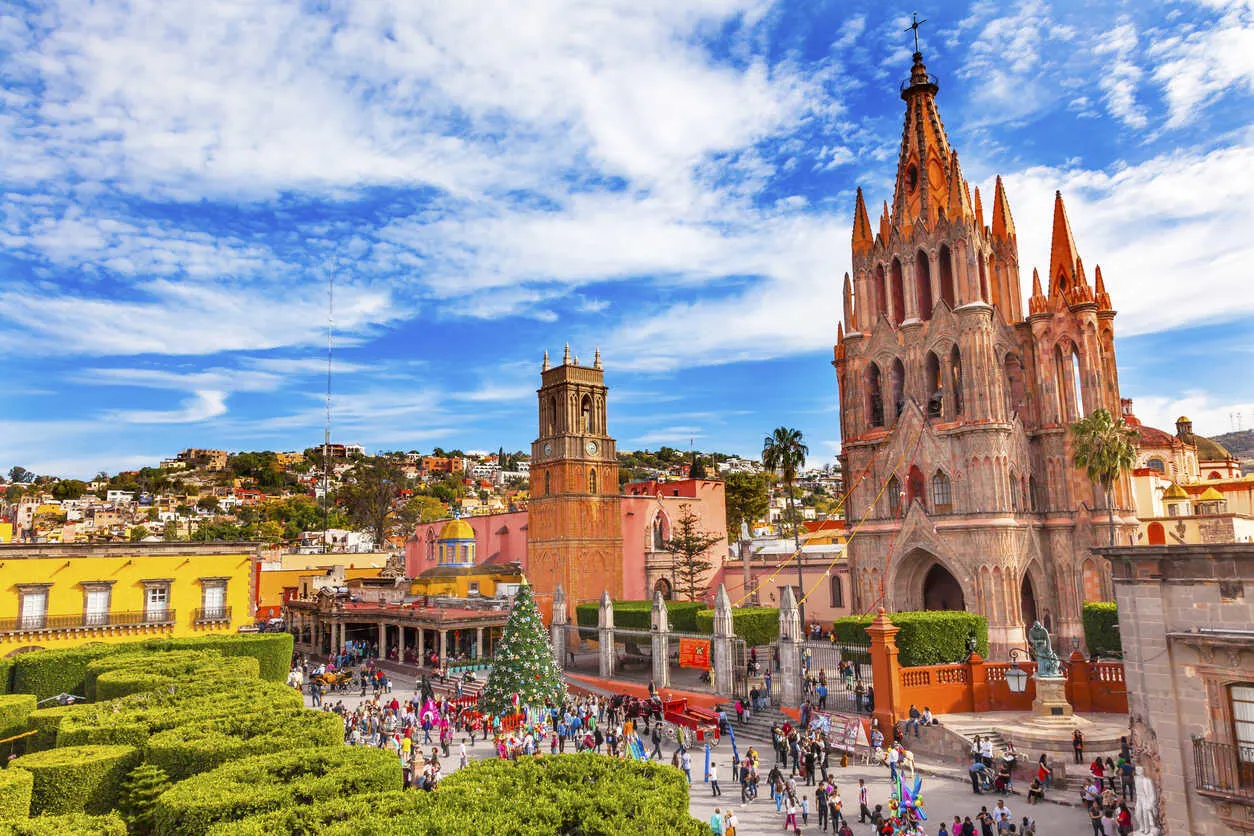
By Jason Holland
The Colonial Highlands is an enchanting region offering romantic cities, rich culture, a temperate climate, and a large, welcoming expat community.
The three main cities—Querétaro, Guanajuato, and San Miguel de Allende—are renowned for their historic centros filled with grand colonial architecture, modern conveniences, and top-notch, affordable medical care. All three cities are UNESCO World Heritage sites. The region offers a unique mix of artisan markets and street vendors alongside art galleries, home décor shops, chic clothing boutiques, and organic food stores. Traditional taco stands share space with innovative fine-dining establishments.
It’s a compelling combination of modernity and old-world charm. In San Miguel de Allende, particularly, the well-established expat communities ensure newcomers can easily integrate. Mexican locals also warmly embrace foreign residents, fostering opportunities for friendships and cultural exchange.
The warm climate, strong local traditions, modern amenities, and picturesque landscapes make the Colonial Highlands a top destination for charm, culture, and creative inspiration.
Life in the Colonial Highlands revolves around its Spanish colonial cities, considered among the most beautiful in Latin America. The region’s civic buildings, ornate churches with looming bell towers, sweeping plazas, and verdant parks provide a historical backdrop for daily life. Much of the historic centros have been restored and repurposed into private homes, boutique hotels, shops, doctor’s offices, art galleries, and eateries.
The Colonial Highlands’ elevation—about 5,000 to 7,000 feet above sea level—creates a semi-arid climate with low humidity and temperate weather year-round. This makes outdoor living and socializing a daily pleasure. Walkable towns encourage meeting friends at a café, shopping for fresh produce at local markets, or simply enjoying a leisurely stroll.
The dining scene is exceptional, blending traditional Mexican restaurants with international cuisines. Cultural activities abound, with live music, author readings, museums, art galleries, theaters, and art-house cinemas. Many residents are inspired to pick up an instrument, pen, camera, or paintbrush themselves.
For those drawn to a vibrant lifestyle, the region offers a full calendar of events. Live performances, festivals, and creative workshops provide plenty of opportunities to engage with the arts and the community.
Living in the Colonial Highlands is remarkably affordable. While San Miguel de Allende is considered the most expensive of the three main cities, prices for daily essentials like groceries, utilities, and transportation remain consistent across the region.
Rentals in the region start at about $500 per month for a one-bedroom apartment, while two- or three-bedroom condos or homes can range from $1,600 and up. Some rentals include utilities, maid service, and other extras. Sale prices for two- or three-bedroom homes begin around $150,000, with higher prices for premium locations and amenities.
Utility costs are minimal, with no need for air conditioning or heating in the region’s mild climate. Electricity averages $75 per month, water about $20, and high-speed internet $40. Groceries cost approximately $300 monthly for a couple, with meals out averaging $300 depending on dining preferences. Fine dining with wine for two typically costs $50, while local eateries provide delicious meals at significantly lower prices.
The Colonial Highlands is centrally located, about four hours north of Mexico City, with excellent infrastructure for travel within the region and beyond. Smooth toll highways connect major cities, and first-class bus routes offer reclining seats, Wi-Fi, and other conveniences. International airports in Querétaro and near Guanajuato make domestic and international travel easy and affordable, with some flights under $100.
The region also boasts world-class medical care at a fraction of the cost in the U.S. Private and government-run hospitals and clinics are readily available, offering specialized care, English-speaking professionals, and an abundance of pharmacies.
San Miguel de Allende has the largest expat community, but Querétaro and Guanajuato also host thriving foreign resident populations. Activities for expats include hiking, book clubs, pickleball, card games, potluck dinners, and movie nights. English-language churches and volunteering opportunities provide additional ways to connect. Many newcomers find Facebook groups invaluable for networking and discovering events.
Expats often remark on how busy they are after moving to the region—enjoying activities and events they love while forming new friendships in a warm and welcoming community.
With its enchanting colonial architecture, vibrant arts scene, rich cultural traditions, and modern conveniences, the Colonial Highlands is a top choice for expats seeking a high quality of life. The mix of Mexican heritage and international influences creates a unique and inviting atmosphere, making these towns an ideal place to call home.
The Chiriquí Province, Panama
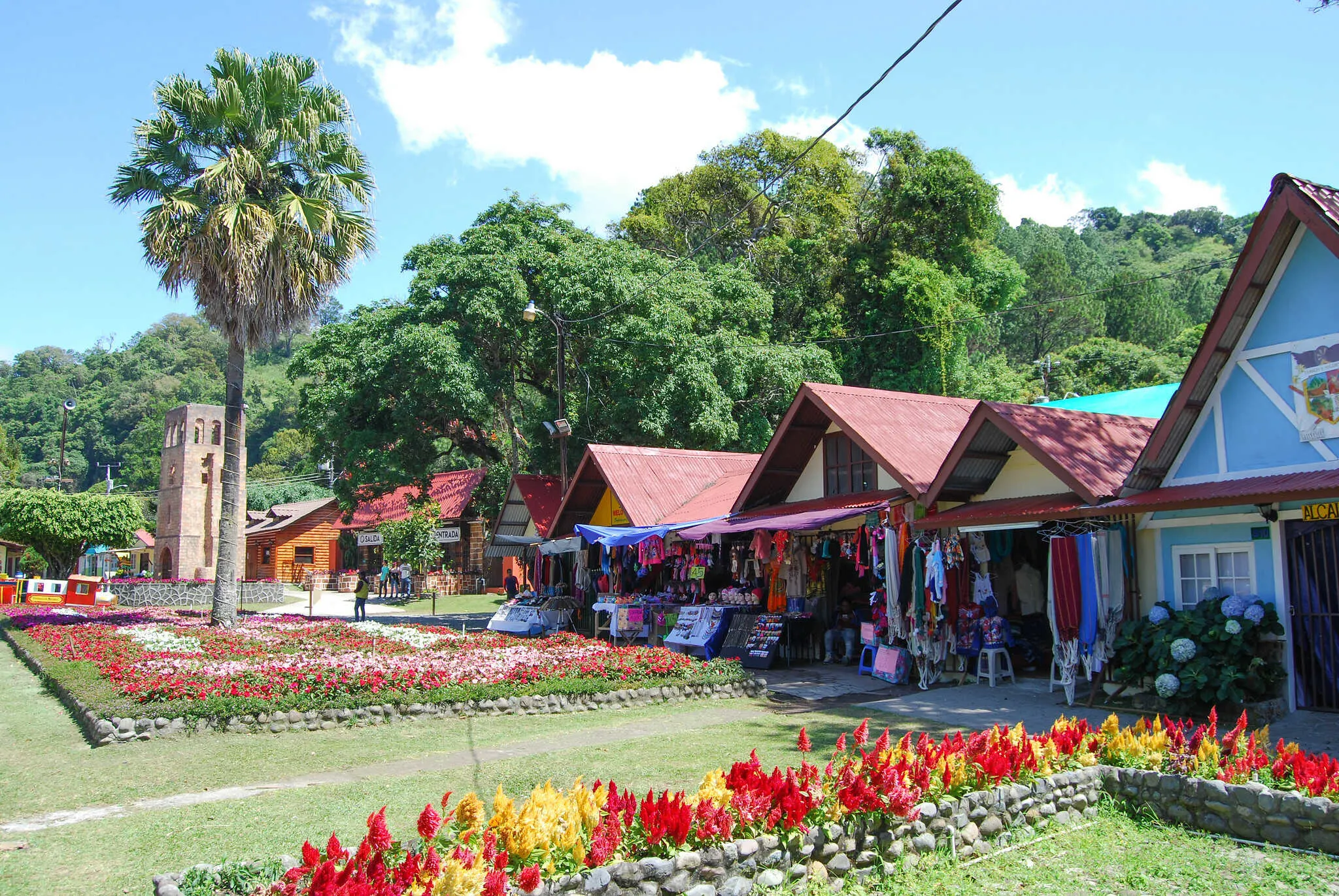
By Jess Ramesch
There’s a certain cinematic quality to Panama’s Chiriquí province, known locally as a land of abundance. Mountains rise from the coast, lush with greenery, while flower gardens pop with vibrant blooms. National parks amaze visitors with towering trees that seem to touch the sky.
In this western region, nestled among cloud forests and peaks of the continental divide, life is good. Fertile soil and ample rainfall make Chiriquí the agricultural heart of Panama, providing 80% of the country’s fresh produce. Farmers and fishermen also supply high-quality chicken, eggs, pork, fish, and seafood from the Chiriquí coast.
Early settlers included Swiss, German, Swedish, and Yugoslav immigrants, who built Alpine-style homes in villages like Boquete and Volcán. These thriving expat communities are still flourishing today. The greater Boquete district is particularly well-established, with numerous organizations and activities. Its cool, spring-like weather, averaging in the 70s Fahrenheit, is complemented by frequent misty rain, earning the region the nickname “rainbowland.”
Here, locals and expats alike spend their days outdoors, enjoying trails and terraces with breathtaking mountain views. With no need for heating or air conditioning, electricity costs range from just $30 to $150 per month. Water is even cheaper, averaging $0 to $20 monthly. Propane gas for cooking, heating water, and running a dryer costs as little as $2 to $10.
Fresh, locally grown food is another highlight. Groceries from markets and supermarkets typically cost $400 to $450 per month for a couple, while dining out and entertainment add another $150 to $350, depending on lifestyle.
Community spirit thrives in Chiriquí, with residents banding together to create a library, hospice, jazz and blues festival, weekly market, theater, and more. Reliable internet, priced at $20 to $75 per month, keeps everyone connected, while affordable streaming services like Netflix or cable range from $9 to $50. Cellphone plans are budget-friendly too, from $10 to $80 monthly.
Transportation costs are modest. Buses and taxis are widely used, and car owners spend around $50 to $200 per month on fuel and maintenance.
It’s nearly impossible to be bored in Chiriquí.
Friends and family are eager to visit when you live here. Many expats report seeing their children and grandchildren more frequently since moving to Chiriquí. Popular attractions include coffee farms, the unique vampire orchids at Finca Dracula, and the lush Volcán Barú, a national park and active volcano that draws adventurous hikers. Visitors can explore waterfalls, tackle rapids, go rock climbing, or volunteer at the Jungla de Panamá wildlife rescue. Famous trails like Los Quetzales and bi-national parks such as La Amistad offer even more opportunities for adventure.
The beaches and islands of Chiriquí add another layer of charm. Remote, pristine locations like La Barqueta are easily accessible—just a 30-minute drive from David. Las Lajas, a vast, tranquil beach with a sweet little town, is another favorite. The unspoiled islands around Boca Chica, a sportfishing haven, offer surfing, whale watching, scuba diving, and more.
David, just 35 minutes from Boquete, serves as a convenient hub for the province. With malls, cinemas, clinics, and two excellent hospitals, it’s a place you’ll visit often if you choose to live in one of the surrounding expat-friendly towns. A couple can live well in David on $1,500 per month. The affordability extends to housing across the region. Rentals for a two-bedroom house range from $550 to $1,000 per month, while those looking to buy can find homes priced between $80,000 and $170,000. With property taxes as low as 0.5%, buying a modest home often results in significant long-term savings.
Chiriquí is a prosperous province blessed with stunning views and an incredible climate, making it ideal for full-time living or growing the food that sustains us. It’s the perfect place to stay fit and active, regardless of age. If you enjoy life’s simple pleasures—kindness, community, fresh air, sunshine, and nature—then come experience la tierra mágica de Chiriquí.
Guanacaste, Costa Rica
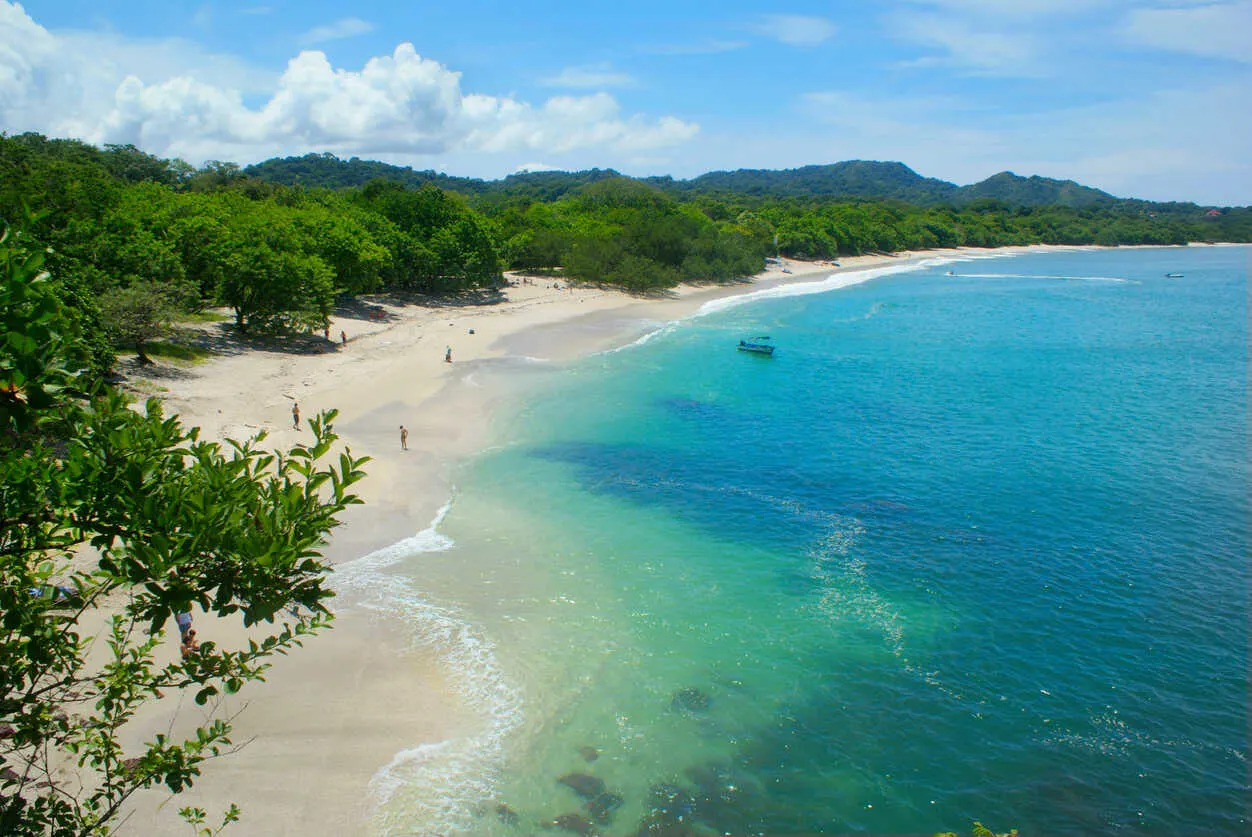
By Bekah Bottone
Guanacaste, Costa Rica’s sunniest region, is a paradise for those seeking coastal beauty, adventure, and a laidback lifestyle. Stretching along the North Pacific Coast, this region is known for its golden beaches, turquoise waters, and striking sunsets. Guanacaste’s dry tropical climate offers near-constant sunshine, making it a year-round favorite for outdoor enthusiasts and beach lovers.
Towns like Tamarindo, Playas del Coco, and Nosara are hubs of activity and relaxation, each with its own character. Tamarindo, with its vibrant mix of international restaurants, boutique shops, and a buzzing nightlife, attracts surfers, digital nomads, and retirees alike. Playas del Coco is known for its calm waters and family-friendly atmosphere, while Nosara, a hub for yoga retreats and eco-tourism, appeals to those seeking wellness and sustainability. Beyond the beaches, the region is dotted with small towns and rural landscapes that offer a slower pace of life.
Living in Guanacaste is more affordable than many people expect, especially given its popularity. Rent for a two-bedroom house can start at $850 per month in smaller towns like Villarreal, while a fully furnished beachfront condo near Playa Flamingo costs around $1,850. Utilities, including electricity, internet, and water, typically range from $150 to $275 per month. The region’s proximity to Liberia International Airport ensures convenient access to North America, making it an excellent base for retirees and part-time residents.
The Guanacaste lifestyle revolves around outdoor activities and social connections. Surfing, snorkeling, paddleboarding, and horseback riding are just a few of the activities that make the most of the area’s natural beauty. Many expats find a strong sense of community in local meetups, yoga classes, and cultural events. Tamarindo hosts a weekly farmers’ market where residents gather to shop for fresh produce, artisanal goods, and organic products.
Guanacaste is also known for its incredible biodiversity. National parks like Rincon de la Vieja and Palo Verde offer hiking trails, hot springs, and opportunities to spot wildlife such as monkeys, toucans, and iguanas. The Gulf of Papagayo, with its pristine beaches and secluded coves, is a favorite for boat trips and whale watching.
The region’s healthcare facilities are another strong draw. Liberia and nearby towns have clinics and private hospitals offering high-quality medical care at a fraction of U.S. prices. Pharmacies are well-stocked, and many offer consultations with trained professionals.
Expats in Guanacaste appreciate the region’s vibrant social scene. Groups like the Guanacaste Women’s Beach Society and weekly meetups in Tamarindo make it easy to build connections. Many residents also enjoy the region’s mix of casual and fine dining options, with beachfront restaurants serving everything from fresh seafood to gourmet international cuisine.
Whether you’re drawn to the surf culture of Tamarindo, the tranquil charm of Playas del Coco, or the wellness-focused vibe of Nosara, Guanacaste offers a slice of paradise that feels like home. Its stunning landscapes, warm climate, and welcoming communities make it an ideal destination for anyone seeking an adventurous yet comfortable lifestyle.
How To Move Out of the U.S.
How To Move Out of the U.S.
The policy implications of the last election impacted your retirement funds, taxes, healthcare, and more. But you can protect yourself, your family, your future. In lots of safe, warm, friendly spots abroad, you can live comfortably on a budget from $2,000-$3,800 a month (all-in—housing and extras included). We’ll show you how—and where—to go.

By submitting your email address, you will receive a free subscription to IL Postcards, The Untourist Daily and special offers from International Living and our affiliates. You can unsubscribe at any time, and we encourage you to read more about our Privacy Policy.
SOUTHEAST ASIA
Penang, Malaysia
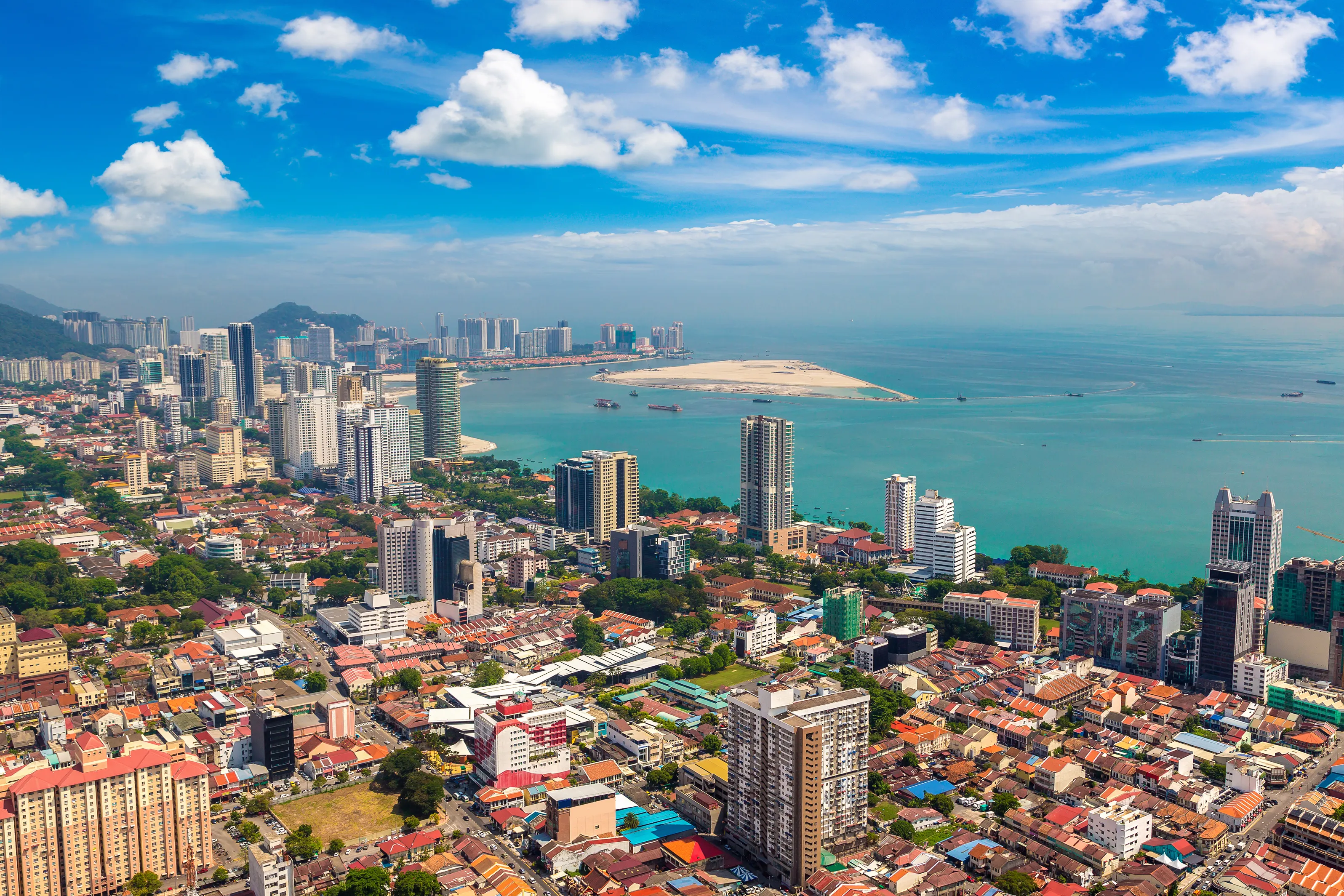
By Keith Hockton
Imagine retiring in Penang—a sun-drenched paradise on the northwest coast of Malaysia, lovingly nicknamed the “Golden Isle.” Known for its harmonious blend of historic charm and modern convenience, Penang offers a lifestyle that’s both affordable and amenity-rich, making it a retiree’s dream.
Here, each day begins with the sound of waves and ends with the colors of the tropics. In between, the rhythm of island life—flavored with cultural richness, delicious food, and a warm sense of community—makes every day an adventure.
Penang isn’t just a beautiful location; it’s an experience. From your first stroll along the beach or through George Town’s historic streets, the island’s vibrant yet laid-back energy is palpable. The sights, sounds, and scents draw you in, especially the aroma of Penang’s famous street food, celebrated worldwide for its richness and variety. In Penang, every meal feels like a small celebration, whether you’re savoring char kway teow at a hawker stall or dining in a cozy local restaurant. This rich culinary scene, combined with the island’s low cost of living and high quality of life, makes Penang a dream destination for retirees seeking a place that balances relaxation with enriching experiences.
A typical day for a retiree here might start with a walk along the beach or a visit to one of Penang’s bustling morning markets. Friendly vendors offer everything from fresh tropical fruits to local spices, and it’s easy to strike up a conversation or make new friends over a cup of coffee at a charming café. George Town, with its colorful colonial-era architecture and UNESCO World Heritage status, offers endless fascination for history buffs and art lovers alike. But Penang’s appeal extends beyond history and heritage. The island’s vibrant, inclusive social fabric is enriched by a mix of locals, expats, and fellow retirees from around the world.
Retirees find plenty to do, from relaxed activities to adventurous pursuits. Penang’s natural beauty and outdoor options make it easy to stay active. You can tee off at a lush golf course, hike up Penang Hill for panoramic views, or join a yoga or pickleball session. The island’s botanical gardens, temples, and nature reserves offer tranquil spots to connect with nature, while the clear waters around Penang are perfect for swimming, snorkeling, and fishing.
Penang’s food scene is legendary and caters to every palate. Meals at hawker centers cost as little as $2 to $5, showcasing a culinary heritage that blends Malaysian, Chinese, Indian, Thai, and European influences. For special occasions, mid-scale and fine dining restaurants offer three-course meals for $20 to $30. For those who enjoy cooking, the local markets provide fresh produce and exotic spices, making grocery shopping both affordable and exciting. Monthly groceries typically cost $200 to $300.
One of Penang’s greatest assets is its high-quality yet affordable healthcare. The island features modern medical facilities and well-trained doctors, with routine visits costing $15 to $25. Comprehensive health insurance is available for $50 to $150 per month, allowing retirees to enjoy peace of mind without breaking the bank.
Housing is another major perk. A fully furnished two-bedroom apartment in a desirable area rents for $550 to $800 per month, with utilities averaging $100 to $200. Transportation is convenient and affordable, with public transit, ride-sharing services, and taxis allowing retirees to get around the island for under $40 per month. Gasoline for those who prefer to drive costs $40 to $80 per month.
With a monthly budget of $1,500 to $2,500, retirees can enjoy a comfortable lifestyle in Penang, complete with cinema outings, cultural festivals, occasional help, and access to high-quality services. Penang’s welcoming expat community offers retirees a sense of belonging through formal and informal social clubs, gatherings, and meetups.
Penang’s infrastructure is thoughtfully designed to meet the needs of its international community. International grocery stores, health and fitness centers, and a robust public transit system make daily life easy and enjoyable. The island’s airport connects to major Southeast Asian hubs, while its bus system, taxis, and ride-sharing options ensure seamless local transportation.
Looking ahead, Penang is set to be one of the top retirement destinations by 2025, offering a unique blend of affordability, culture, and community. Retirees enjoy a lifestyle tailored to their preferences, surrounded by friendly faces, tropical landscapes, and endless opportunities for exploration and relaxation. Penang isn’t just a place to retire; it’s a place to truly live, offering a rich, meaningful experience where every day brings something new to discover. With its affordability, culture, and the warmth of its people, Penang stands out as a place where retirees can thrive, connect, and make every moment memorable.
Northern Thailand
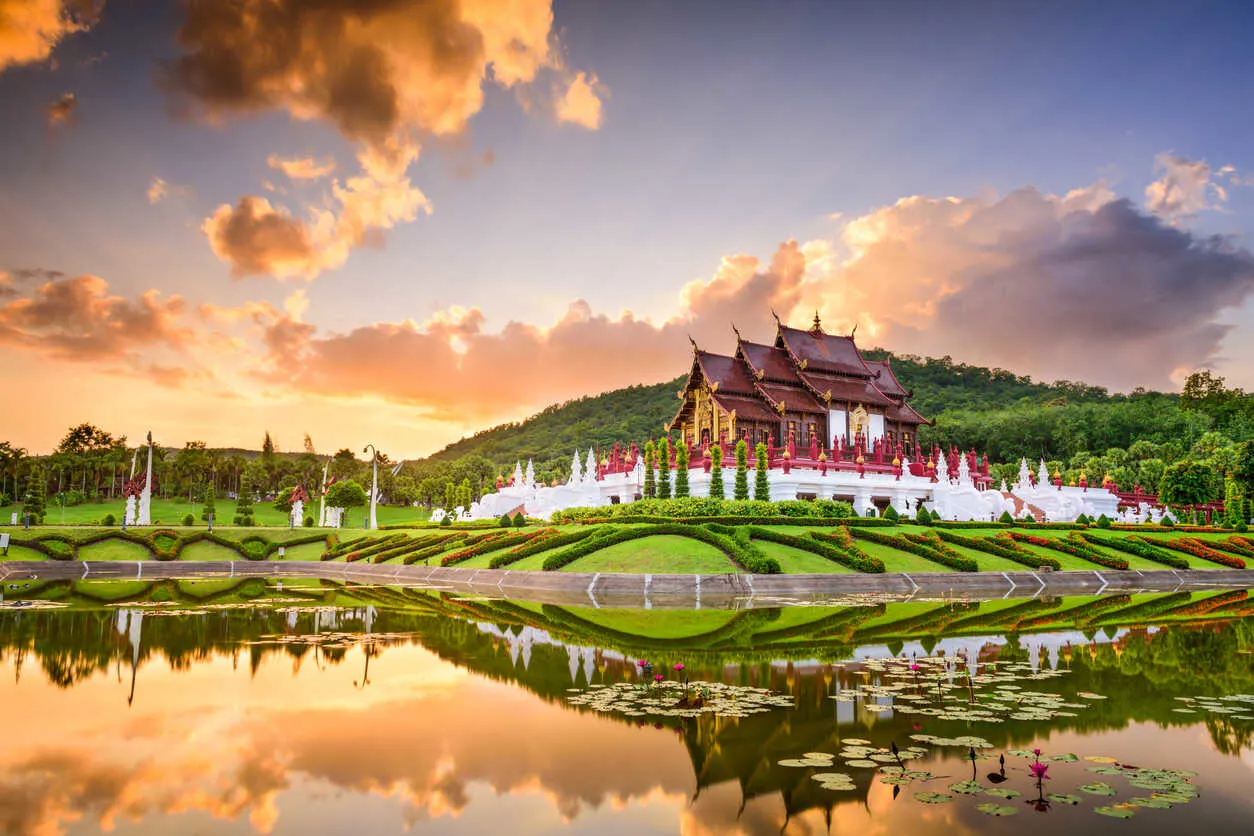
By Rachel Devlin
Thailand is celebrated globally for its warm, welcoming locals, an unparalleled low cost of living, and nightlife that pulses with energy. Whether you’re sipping sunset cocktails on a pristine beach, diving into the hustle and bustle of a vibrant metropolis, or trekking through the lush jungles and tranquil rice paddies of the North, Thailand promises to deliver your dream lifestyle—and then some.
Imagine renting a chic high-rise condo with mountain views, a spacious Western-style home, or even a traditional teakwood house perched on stilts—all at a fraction of the cost you’d pay elsewhere.
Then there’s the food. Thai cuisine is world-renowned for its bold, velvety flavors and aromatic spices. Northern Thailand, in particular, is a paradise for food lovers, offering a global smorgasbord of flavors, often for just $6 a meal.
Healthcare is another worry you can check off your list. Modern, Western-standard hospitals are widely available in the major cities, boasting state-of-the-art facilities and attentive care—all without the hefty price tag.
Thai culture embraces a gentle and peaceful life. In many Western cultures, older people often feel invisible, but not in Northern Thailand. Social hierarchies dictate genuine respect for elders, and traditional values remain deeply rooted in the North.
Social behaviors, heavily influenced by Buddhism, are gentle and respectful, and it’s rare to see anyone lose their temper. Thais also value fun (sanook), which is embedded in their daily social interactions. Their lighthearted approach to life makes transitioning into this exotic yet peaceful society easy for expats.
Northern Thailand’s cities are bustling, offering a wide variety of consumer goods from technology to fashion, yet they maintain a completely different feel from the rest of the country. The absence of skyscrapers lends these cities a relaxed, semi-country-town vibe, despite the availability of all modern conveniences. Chiang Mai and Chiang Rai are famous for their coffee culture, with numerous cafés where both Thais and expats can be found lounging on beanbags, nets over rivers, or even in treehouses, sipping and chatting as hours gently pass.
Northern Thailand embodies the concept of sabai sabai—a state of health, relaxation, and ease. Massages can be a daily indulgence at just $7 an hour, and health and fitness activities abound, from yoga to pickleball, often at incredibly affordable prices. This is a place where achieving health goals feels easier, thanks to the warm weather and budget-friendly fitness options.
For those seeking social connections, there’s no shortage of activities. Expats organize game nights, pool competitions, book clubs, card groups, and lunch meetups, making it easy to forge friendships and find community. Have a passion or hobby that isn’t already covered? Starting your own group is as simple as posting in one of the many active local expat Facebook groups. Both Chiang Mai and Chiang Rai have well-established expat clubs that regularly host events and activities.
The cost of living makes Northern Thailand a dream destination. Many locals live on just $320 a month, which highlights the financial advantages for expats. Housing is as extravagant or simple as you desire, with rents ranging from $300 to $1,000 per month.
For those who embrace local living and shop at fresh food markets, monthly fruit and vegetable expenses may be as low as $30. Local food is both delicious and affordable, but shopping at plazas for imported goods like beef and pantry staples can bring grocery bills up to around $200 a month.
Utilities are equally affordable. Electricity can be as low as $20 per month, but for an average house with two people running two air conditioners, costs typically range around $130. Water bills average $10 per month, and phone and internet services are about $50, providing easy connectivity and entertainment.
Healthcare is another highlight. A check-up with a general practitioner costs $15, and a first appointment with an English-speaking specialist isn’t much more. Better still, there are no waiting times.
Transportation is inexpensive and convenient. The local “Uber,” called GRAB, costs about $5 for a 20-minute ride, making it easy to enjoy Northern Thailand’s active social scene. Established expats regularly host get-togethers, lunches, dinners, and classes, with social media serving as a hub for announcements.
Northern Thailand offers a tranquil lifestyle that harmoniously blends simplicity with modern conveniences, making it an ideal place to enjoy a fulfilling life—often on what feels like a surprisingly modest budget.
Southern Vietnam
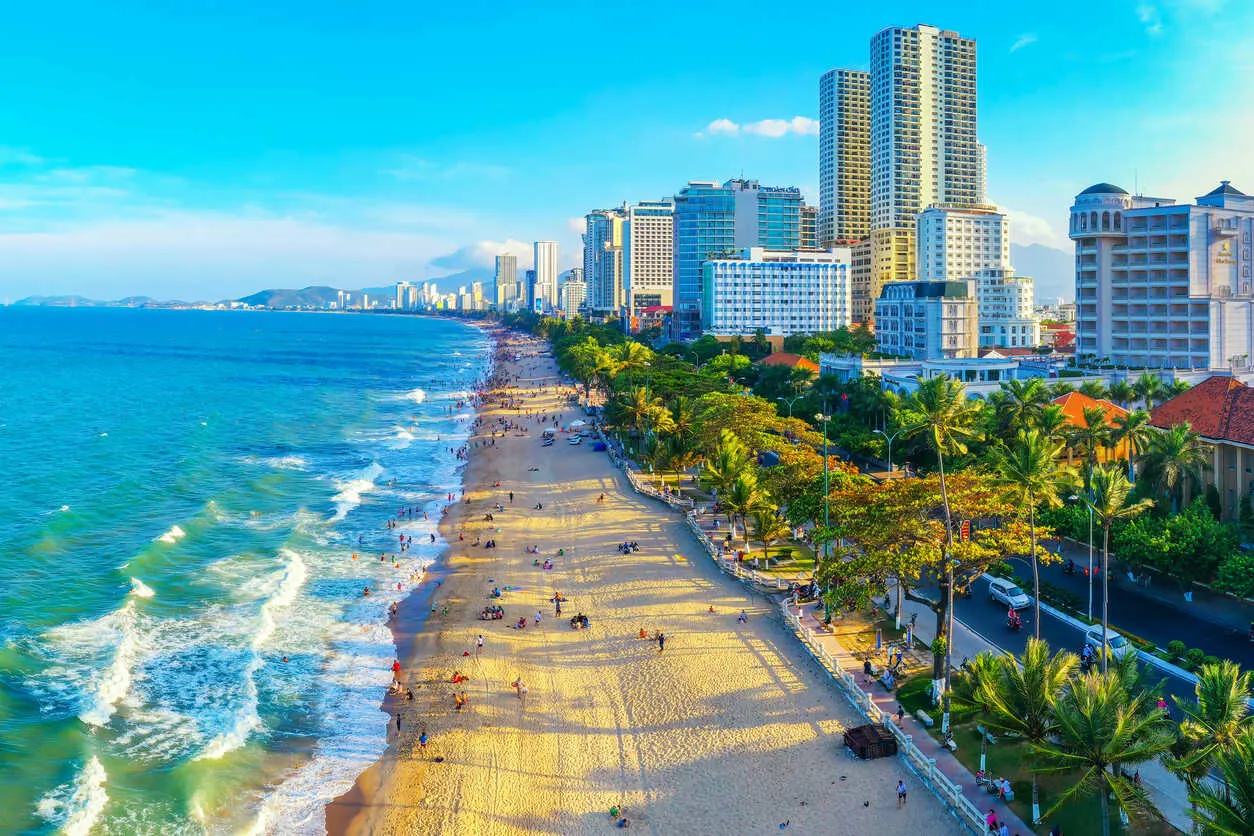
By Wendy Justice
Southern Vietnam offers an incredible lifestyle at a fraction of the cost compared to Western countries. Popular areas like Nha Trang, Vung Tau, and Ho Chi Minh City provide unique opportunities for expats seeking both cultural immersion and modern amenities. The combination of natural beauty, affordability, and vibrant local culture has made this region a top choice for those looking to escape high living costs while enjoying a high quality of life.
Life in Southern Vietnam can be remarkably budget-friendly. For instance, in Nha Trang or Mui Ne, a couple can live comfortably on a monthly budget of approximately $1,200. Rent for a two-bedroom house with a full ocean view can be as low as $355, while monthly utilities, including electricity, internet, and cable TV, amount to less than $90. Dining out is a delight for both the palate and the wallet, with meals costing as little as $1.35 at local eateries. This affordability extends to other popular destinations such as Vung Tau, where expats enjoy a laidback lifestyle for around $1,300 a month, inclusive of rent, utilities, and daily expenses. Restaurants in Southern Vietnam frequently offer fresh seafood and local dishes, allowing residents to indulge in high-quality meals without breaking the bank.
In Ho Chi Minh City, the pace of life is more dynamic, catering to those who enjoy the vibrancy of a bustling metropolis. The city offers a blend of historical charm and modern convenience, with its towering skyscrapers, colonial architecture, and sprawling markets. Expats often find the city’s diverse dining scene and cultural offerings a compelling reason to settle here. Whether it’s exploring Ben Thanh Market, strolling through tree-lined streets in District 3, or enjoying the nightlife in District 1, Ho Chi Minh City provides endless opportunities for entertainment and exploration.
Outside the major cities, the appeal of Southern Vietnam lies in its quieter coastal towns and rural landscapes. Nha Trang, with its turquoise waters and sandy beaches, is a haven for those seeking a relaxed, tropical lifestyle. Its vibrant expat community, coupled with excellent healthcare facilities and modern amenities, ensures a comfortable life for newcomers. Many expats choose to live just outside the main tourist hubs to enjoy more tranquility while still being within reach of the city’s conveniences. Similarly, Vung Tau, a coastal city known for its beaches and seafood, attracts expats who appreciate a slower pace of life. The city’s proximity to Ho Chi Minh City makes it a convenient getaway for residents seeking a balance between urban and seaside living.
The charm of Southern Vietnam extends beyond its affordability and natural beauty. The region’s culture is rich and vibrant, with influences from its French colonial past blending seamlessly with traditional Vietnamese customs. Local markets buzz with activity, offering fresh produce, handmade crafts, and authentic street food. Festivals and celebrations are an integral part of life, providing expats with ample opportunities to immerse themselves in the local culture. From the Lunar New Year festivities to the Mid-Autumn Festival, there’s always a reason to celebrate and connect with the community.
Healthcare in Southern Vietnam is another significant draw for expats. The region boasts modern facilities and highly trained medical professionals at a fraction of the cost compared to Western countries. Expats living in cities like Ho Chi Minh City and Nha Trang have access to international-standard hospitals and clinics that cater to their needs. For routine check-ups or specialized care, the costs are significantly lower, making healthcare accessible and affordable for retirees and long-term residents alike.
Transportation in Southern Vietnam is both convenient and inexpensive. Cities like Ho Chi Minh City offer extensive public transit options, while ride-hailing services such as Grab make getting around easy and affordable. For those living in smaller towns, bicycles and motorbikes are popular modes of transport, further reducing transportation expenses. The well-maintained highways and bus routes connecting major cities and tourist destinations make it simple to explore the region and beyond.
The expat community in Southern Vietnam is diverse and welcoming, providing newcomers with a built-in network of support and social opportunities. In cities like Nha Trang, Mui Ne, and Duong Dong, on the island of Phu Quoc, expat groups organize events, meetups, and activities that help residents build connections and adapt to their new surroundings. These gatherings range from informal coffee mornings to group outings and cultural workshops, fostering a sense of camaraderie among residents.
Southern Vietnam’s low cost of living, stunning landscapes, and warm climate make it an ideal destination for retirees, digital nomads, and anyone seeking a slower, more affordable pace of life. Whether you prefer the cosmopolitan vibe of Ho Chi Minh City, the beachside tranquility of Nha Trang, or the relaxed charm of Vung Tau, the region offers something for everyone. The combination of modern amenities, vibrant culture, and natural beauty ensures that Southern Vietnam remains a top choice for those looking to live abroad.
For expats, the decision to settle in Southern Vietnam often comes down to the lifestyle it affords. Days can be filled with walks along pristine beaches, exploring bustling markets, or simply relaxing with a book in the shade of a palm tree. Evenings bring opportunities to dine out, meet friends, or enjoy cultural performances. With its welcoming atmosphere, low costs, and endless opportunities for adventure and relaxation, Southern Vietnam is more than just a destination—it’s a place to truly call home.
Editor's Note: Intrigued by these top regions? Discover six hidden gems flying under the radar—perfect for your next adventure. Click here to explore!
The World’s Best Retirement Havens for 2026
The World’s Best Retirement Havens for 2026
24 Countries Compared, Contrasted, Ranked, and Rated. You don’t have to be rich to enjoy a pampered retirement, you just need to know where to go. With our 35th Annual Global Retirement Index, our experts hand you a detailed roadmap. Details—and a Special Offer—Here

By submitting your email address, you will receive a free subscription to IL Postcards, The Untourist Daily and special offers from International Living and our affiliates. You can unsubscribe at any time, and we encourage you to read more about our Privacy Policy.
